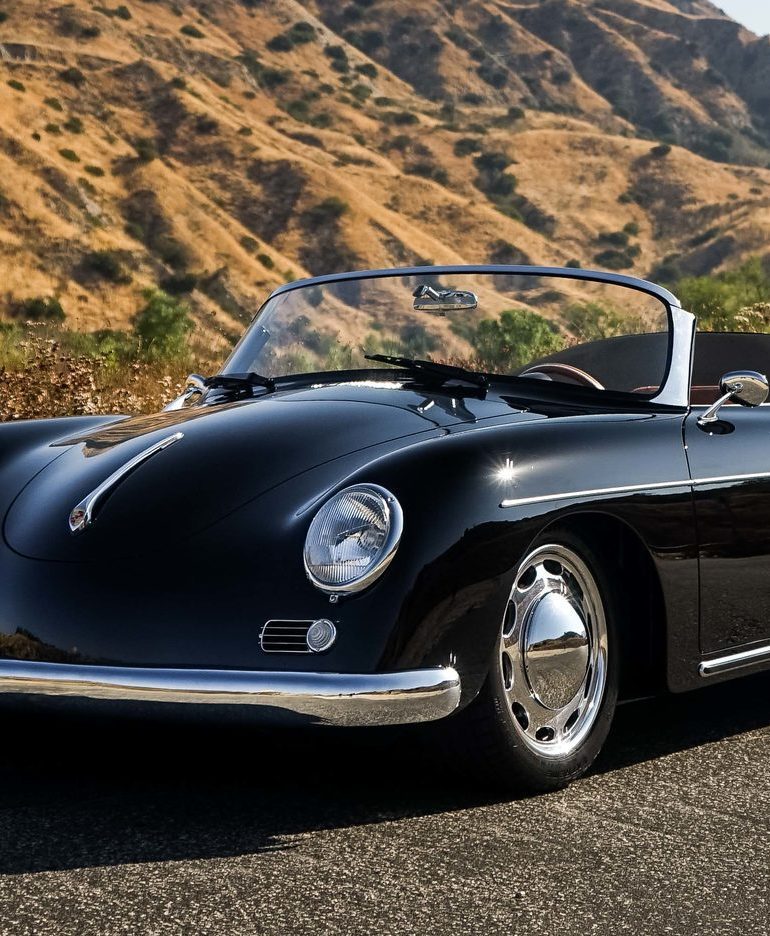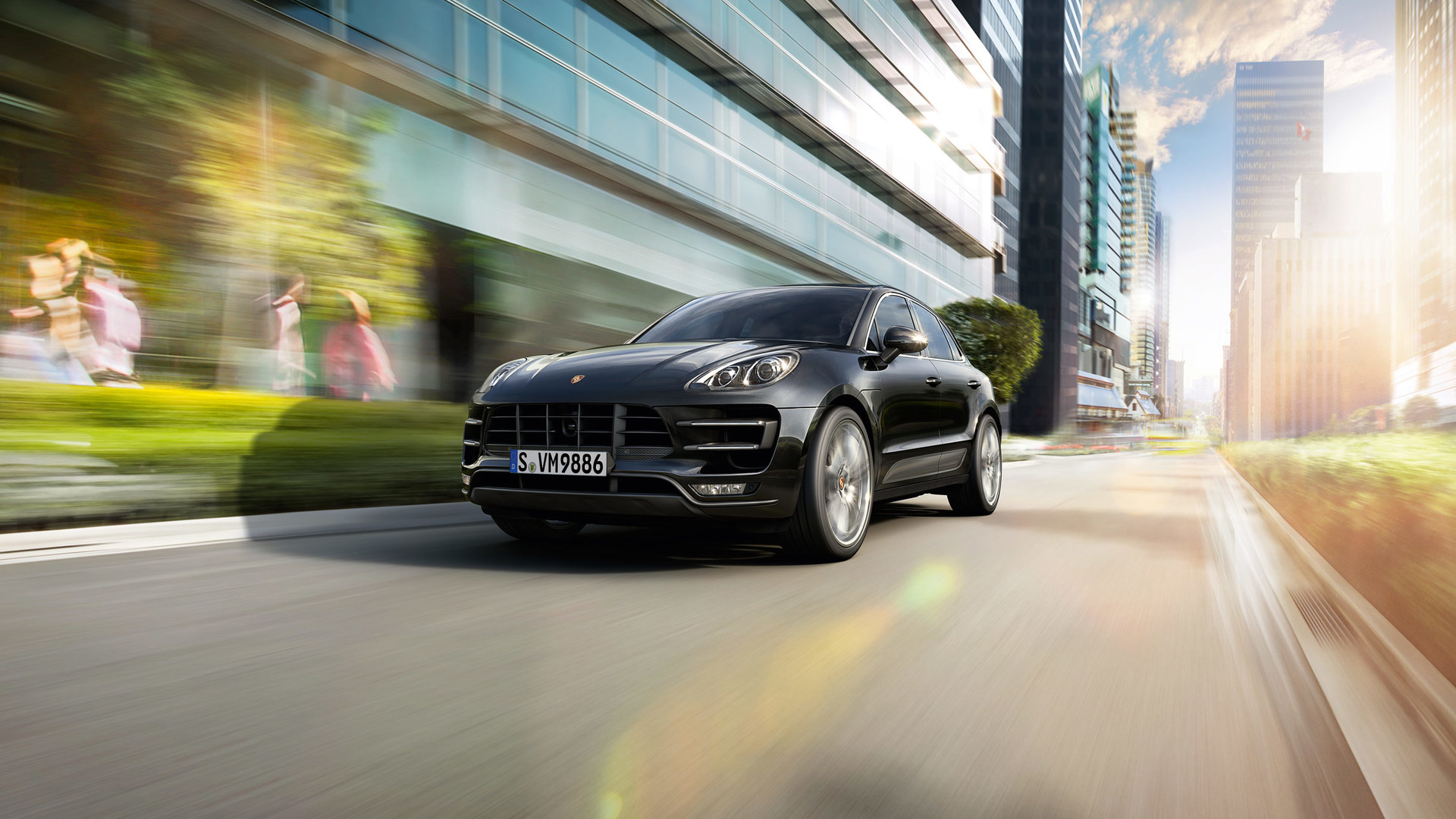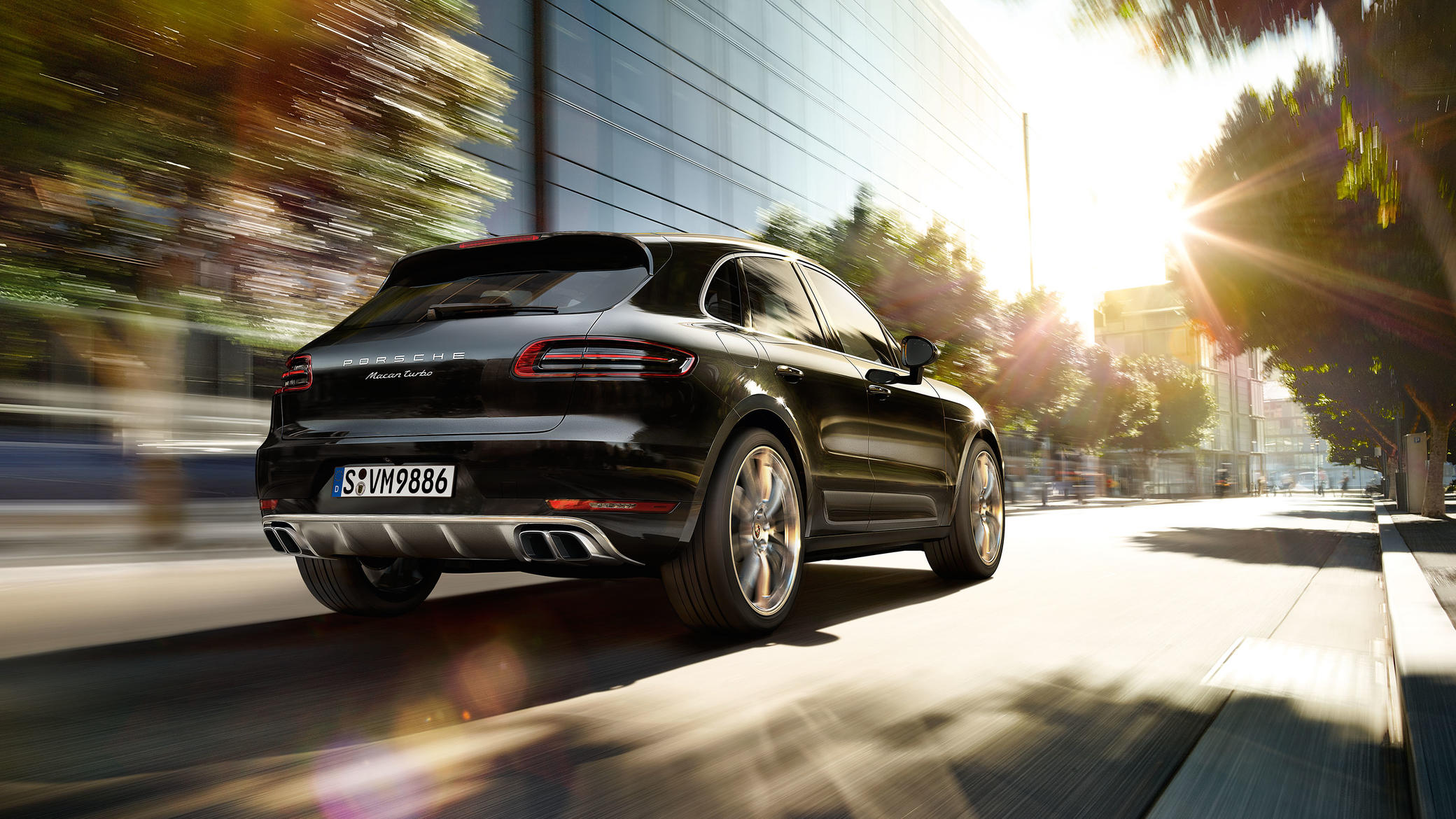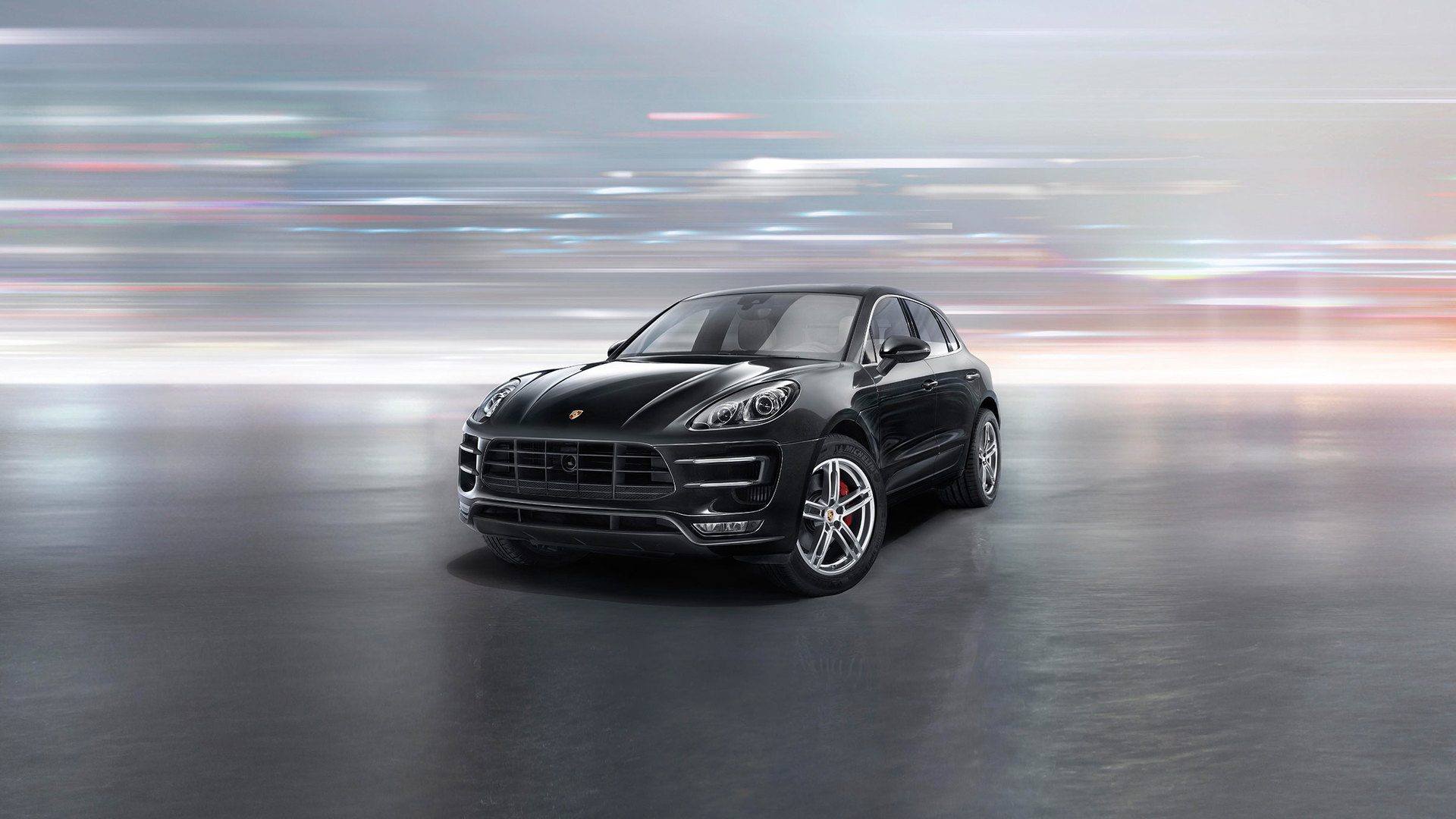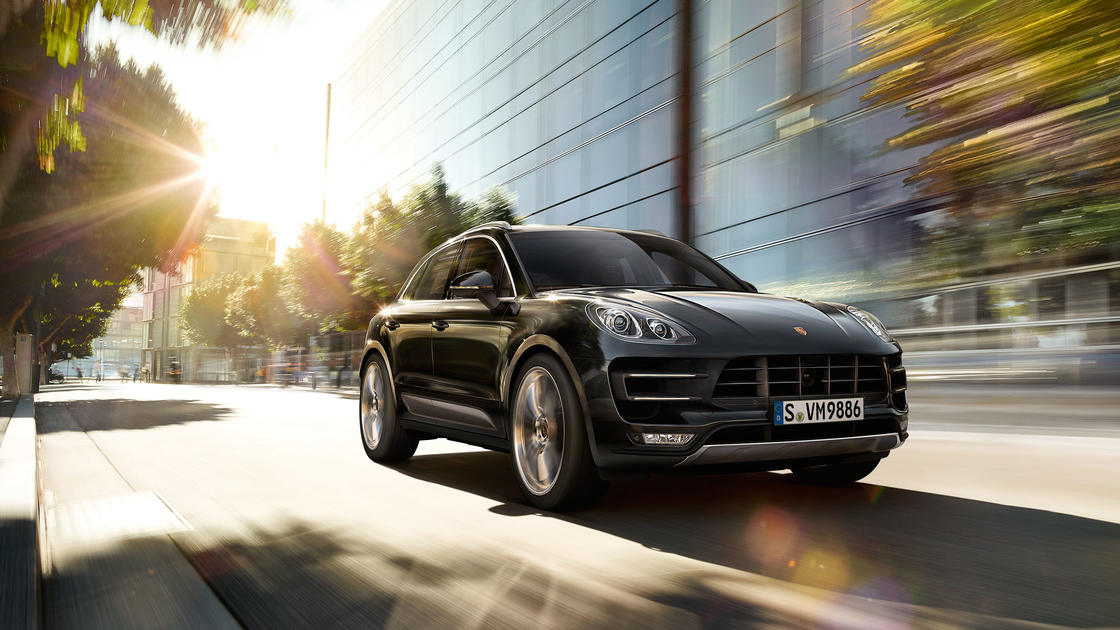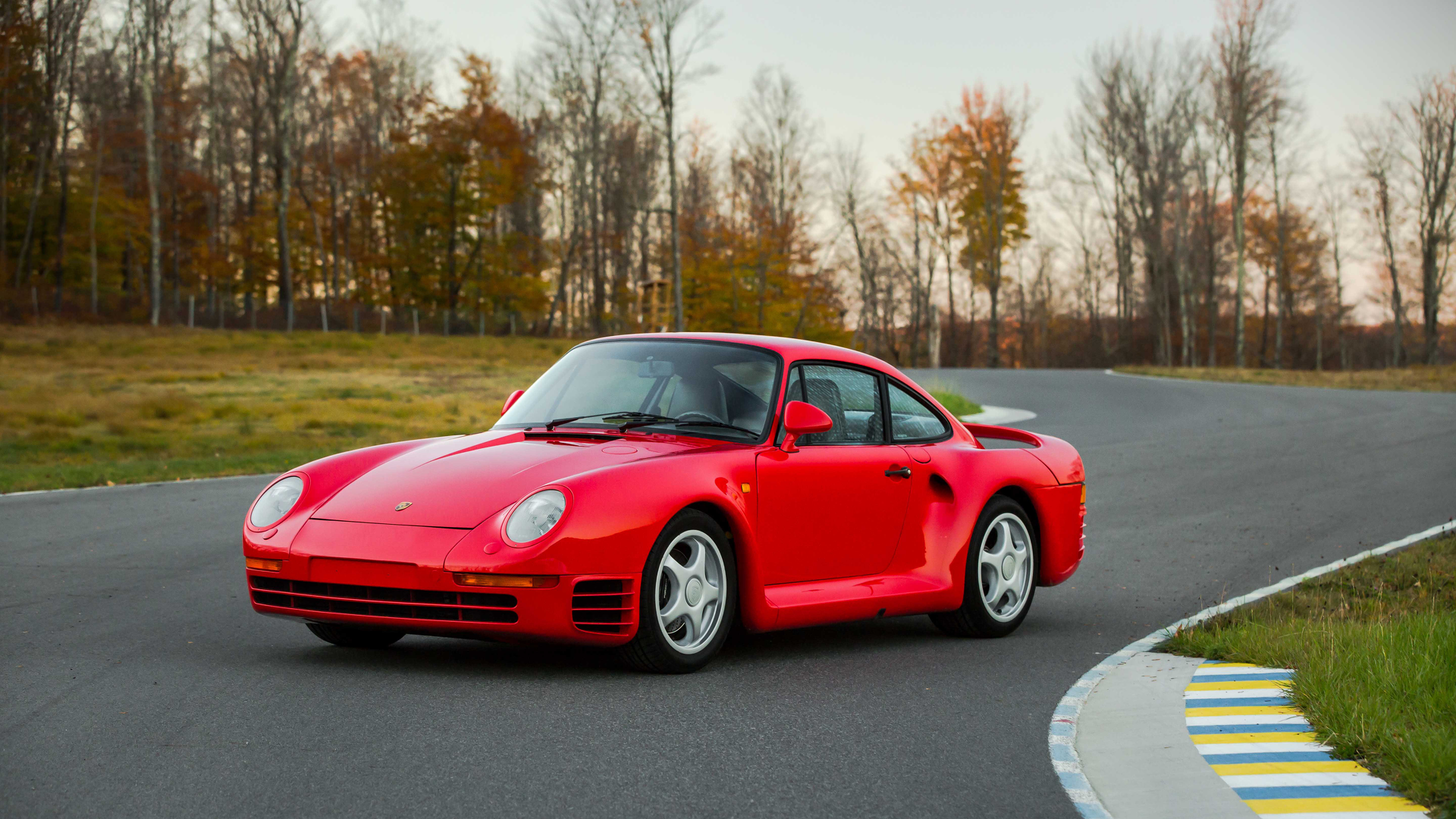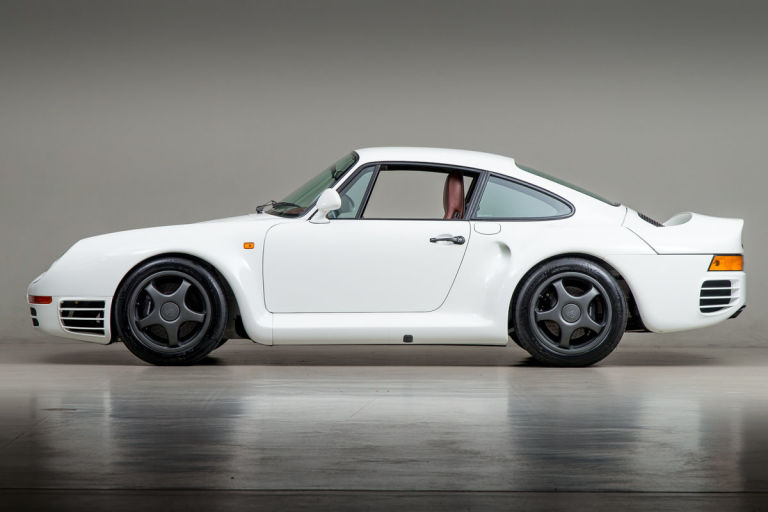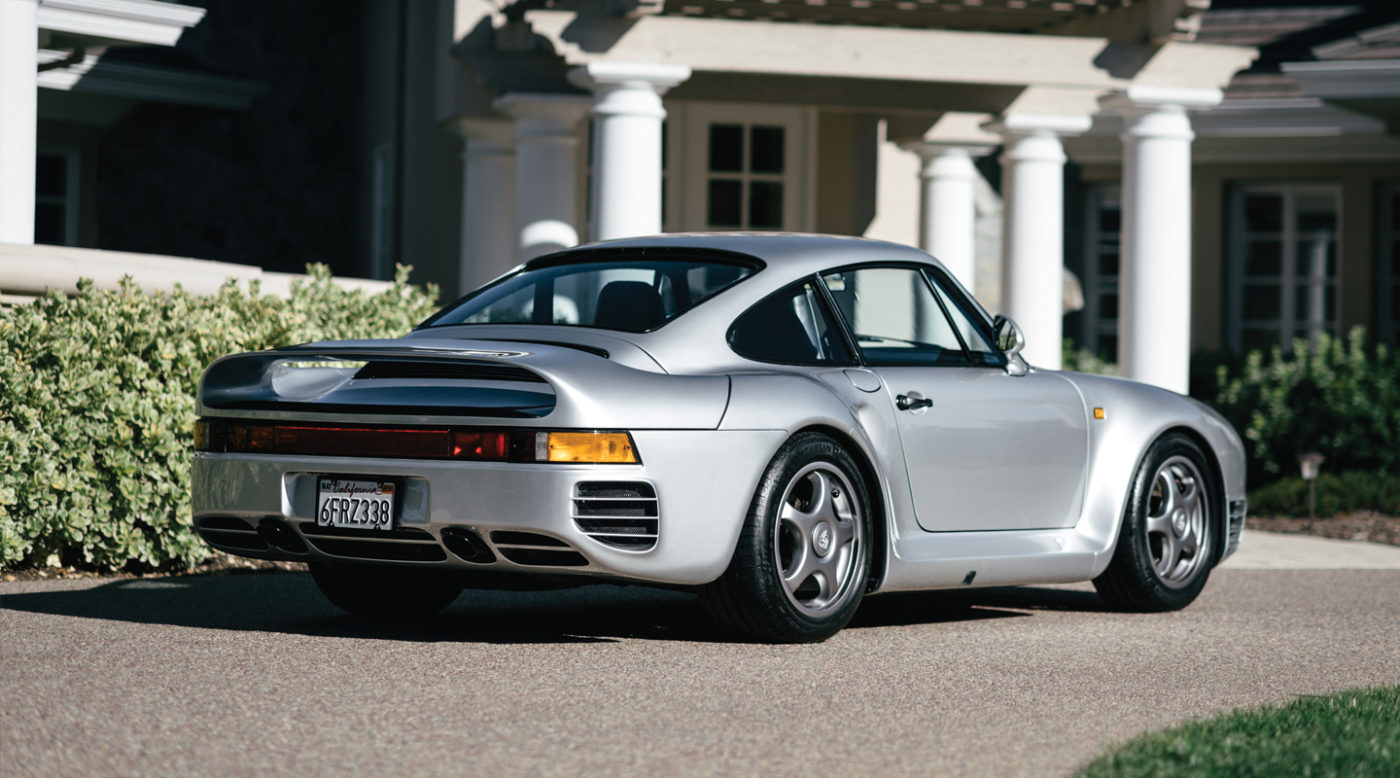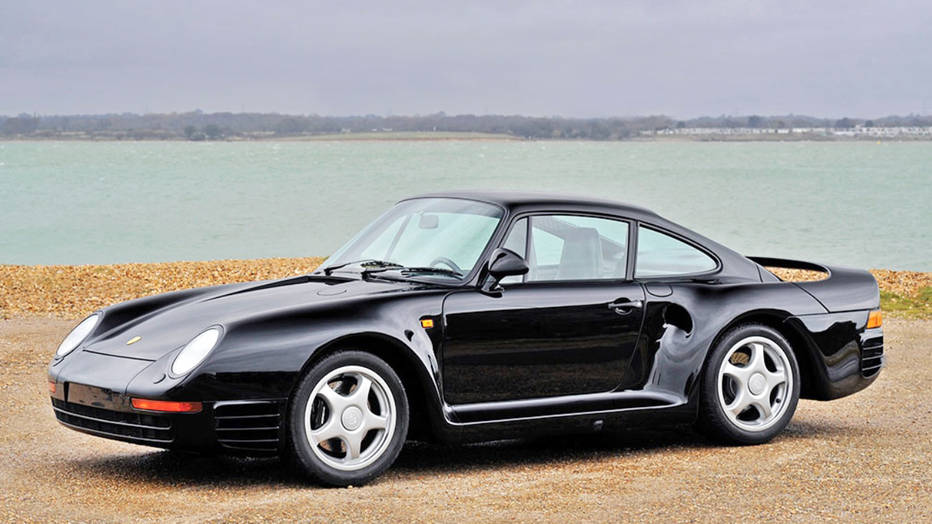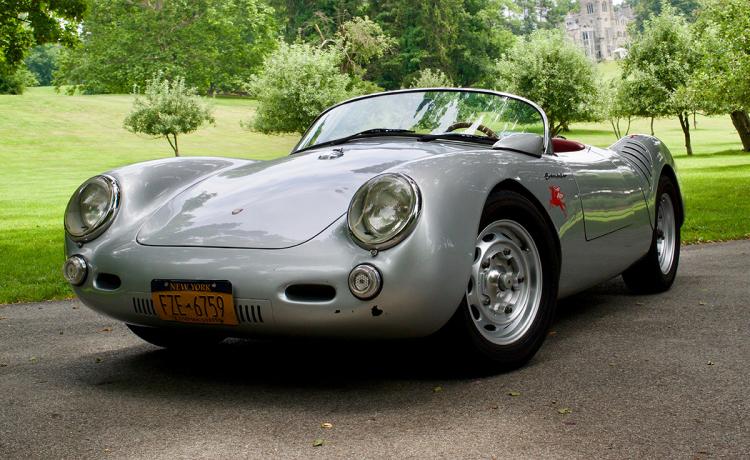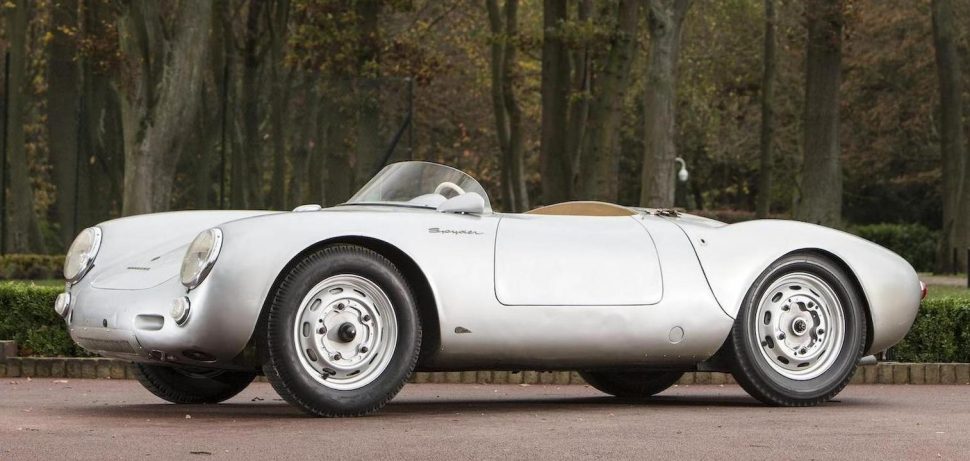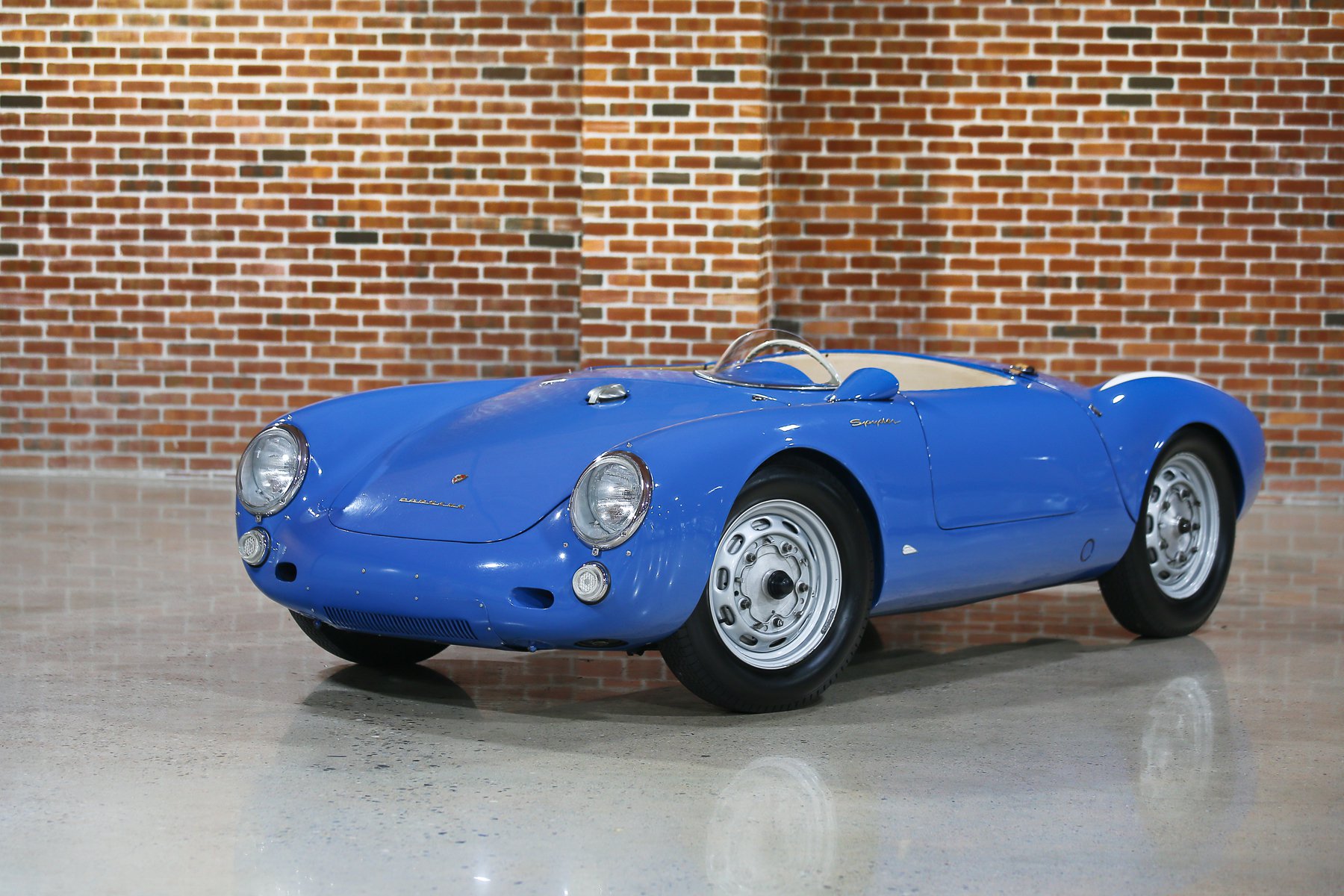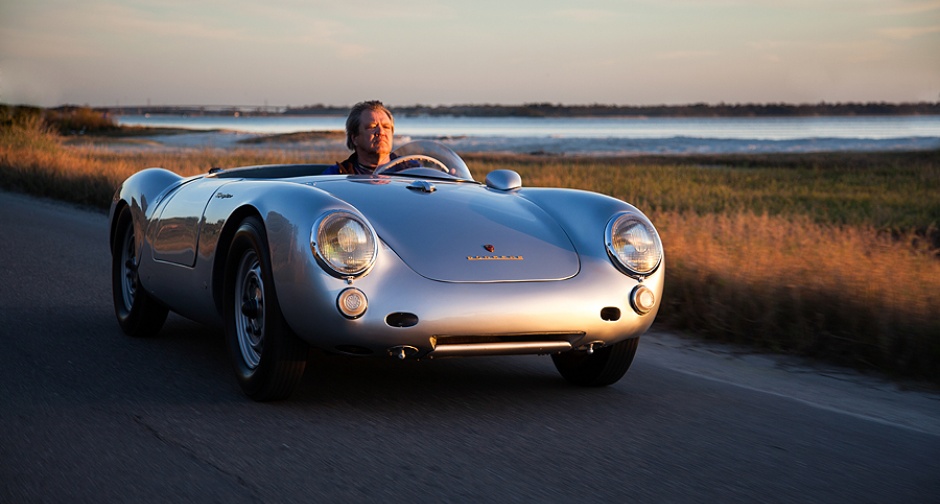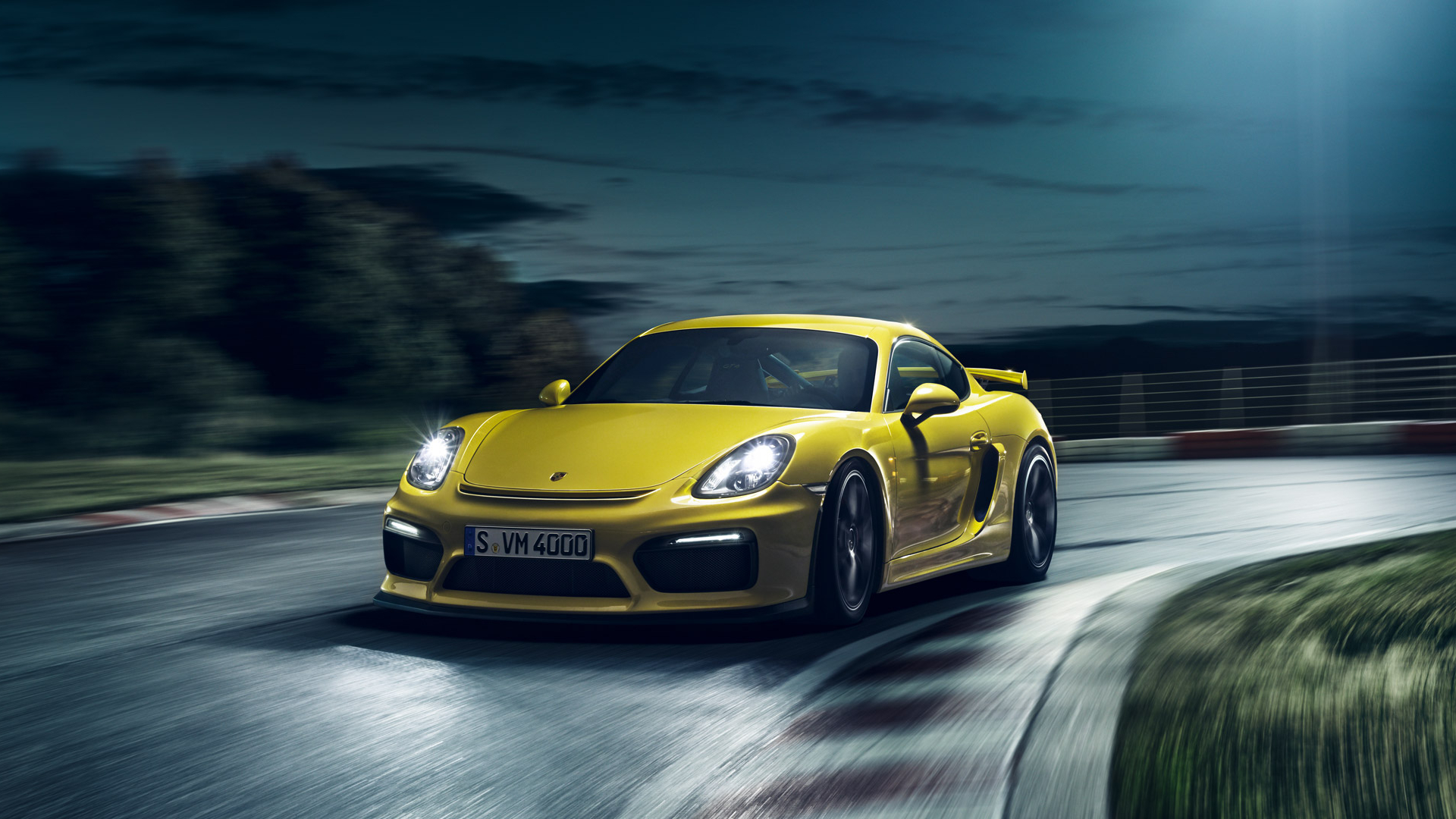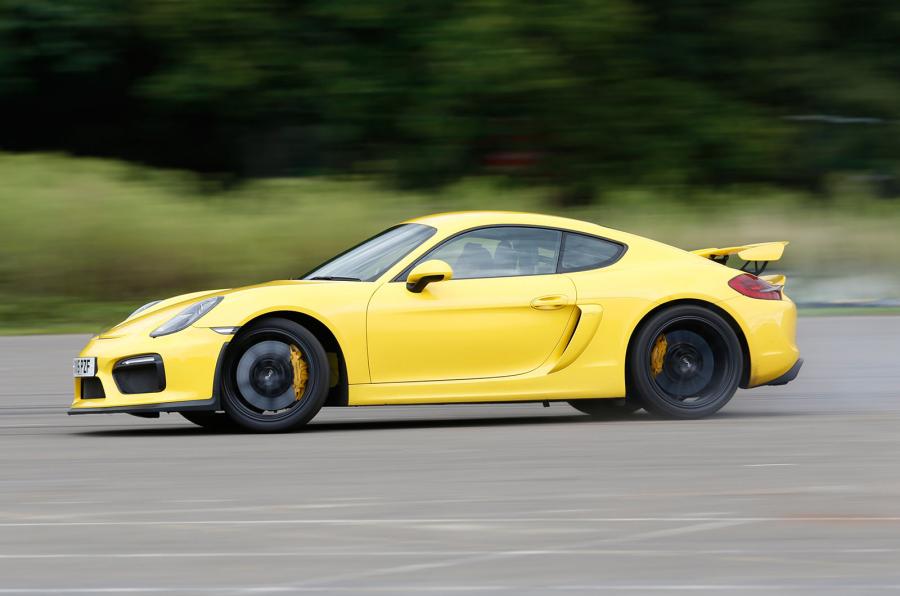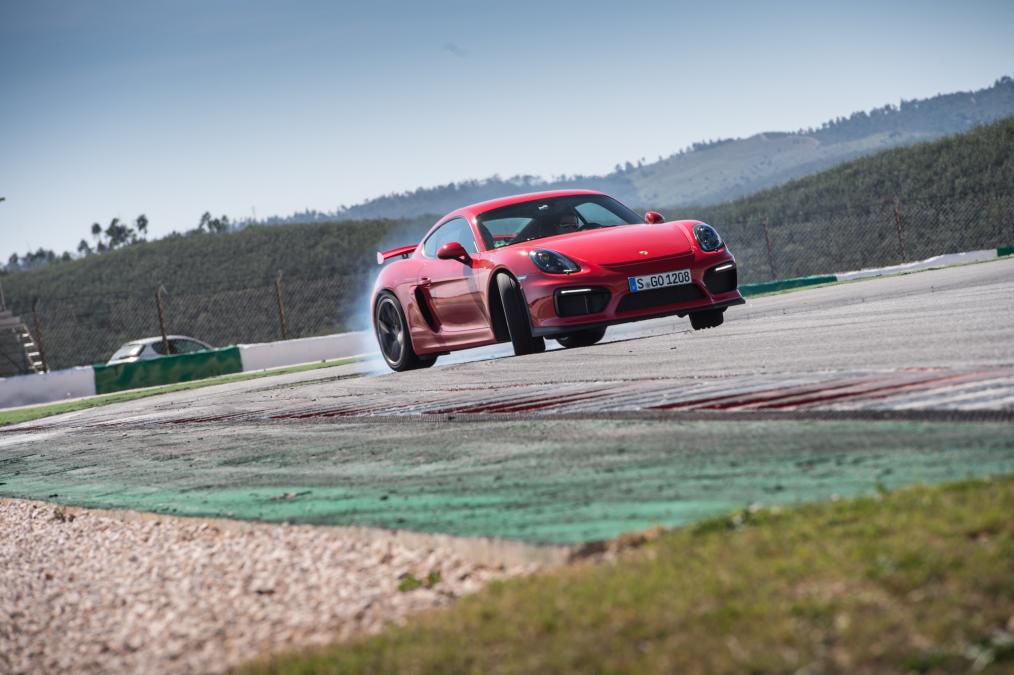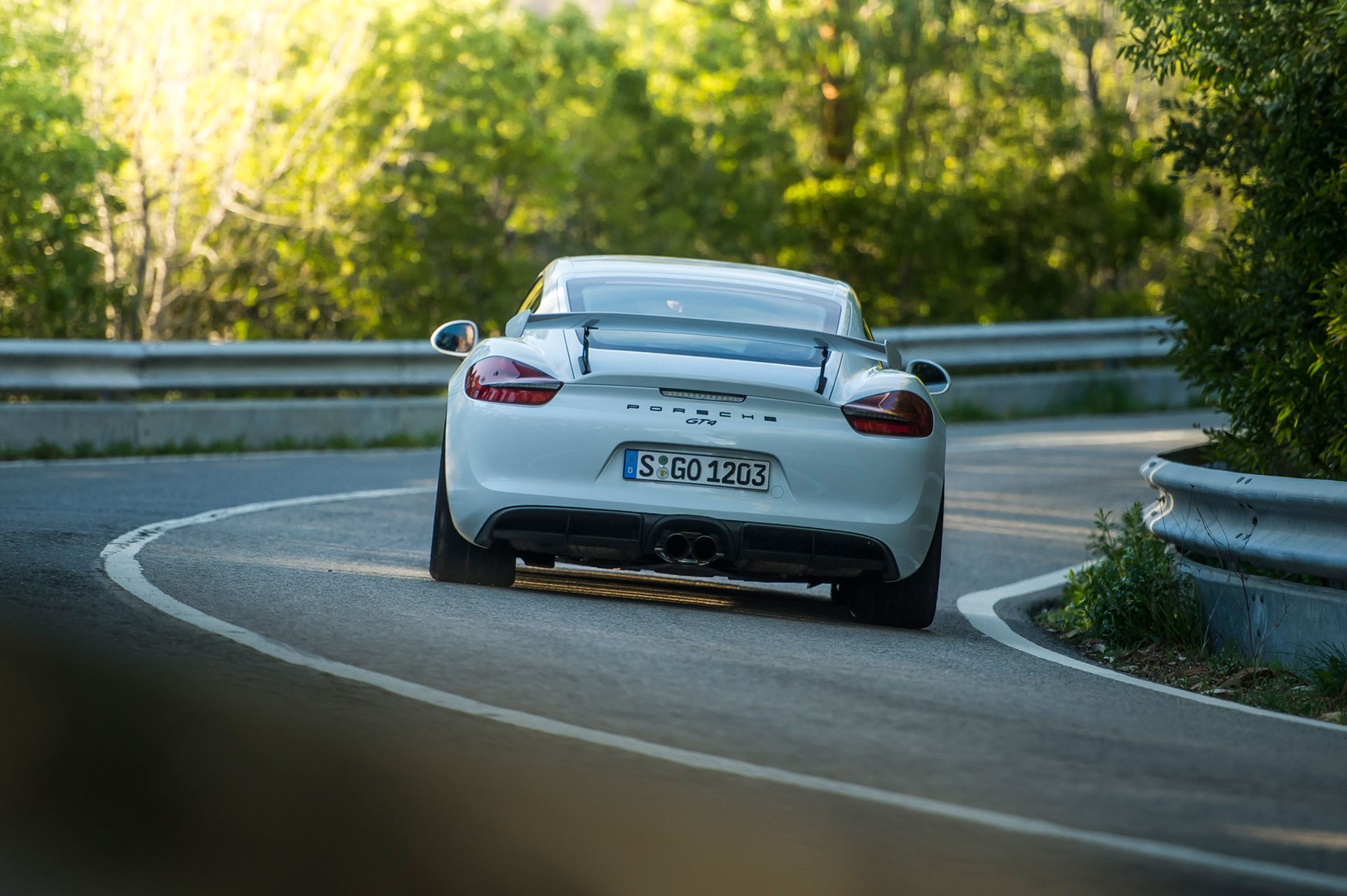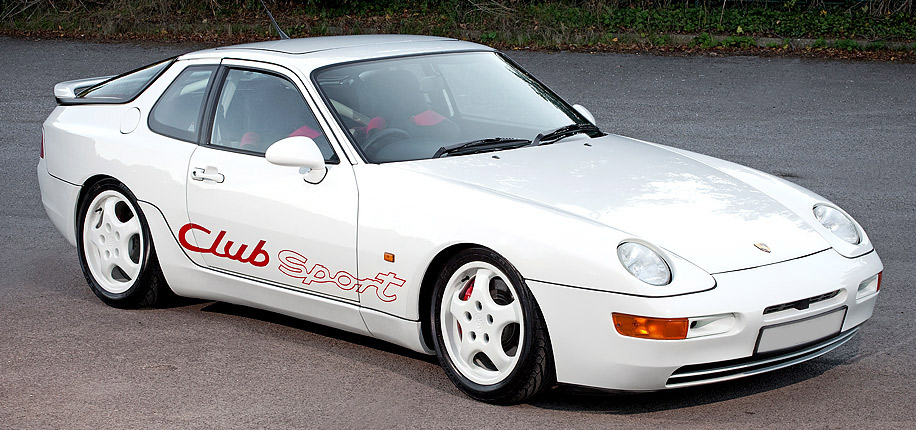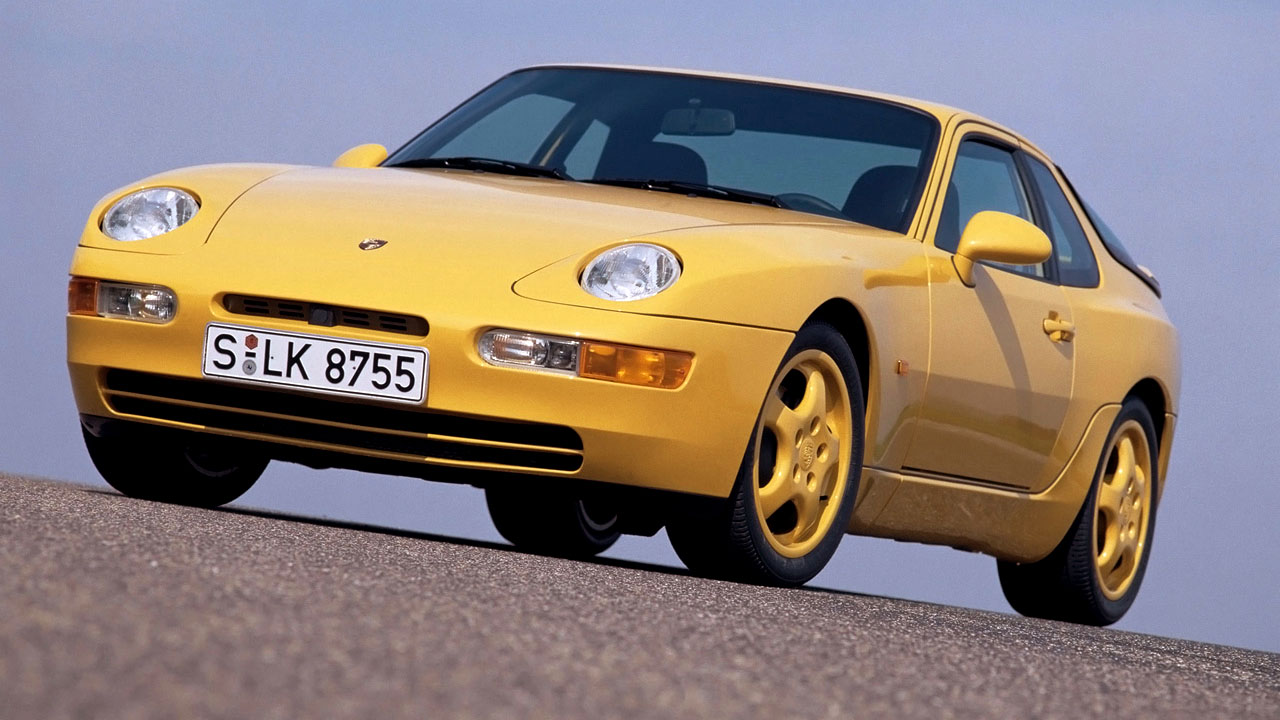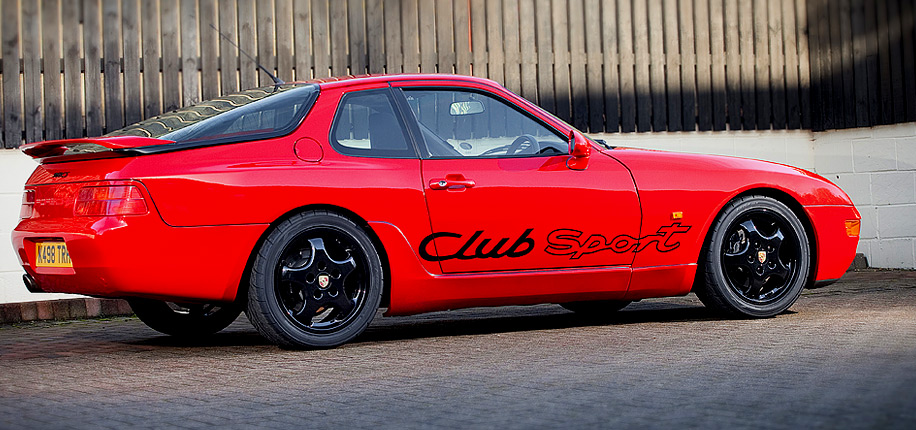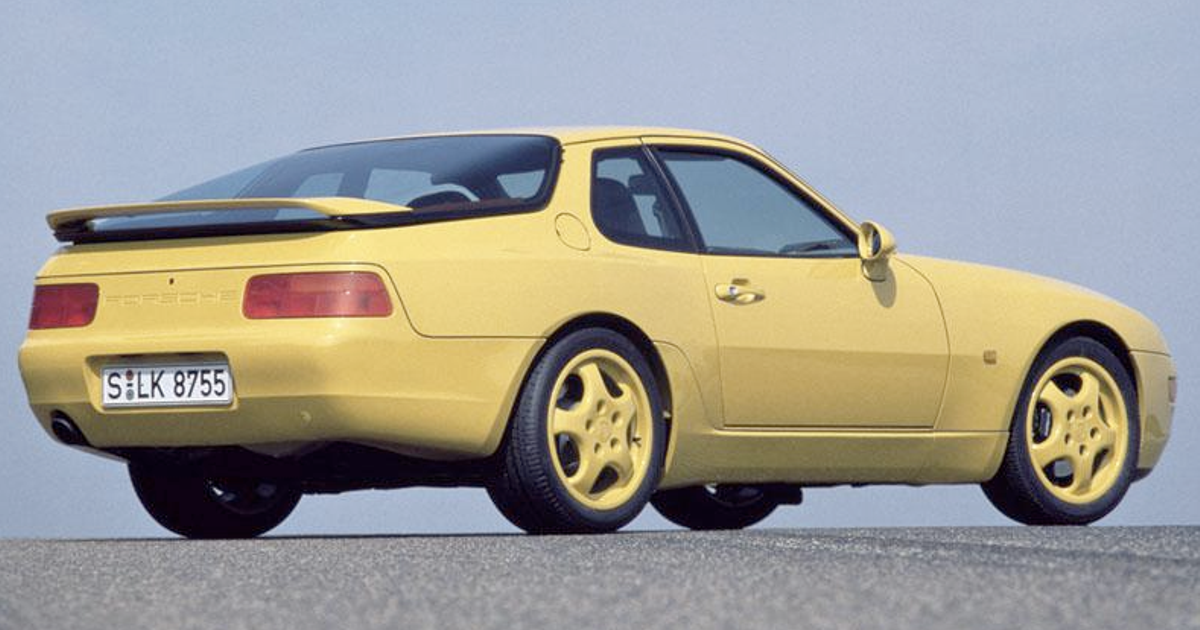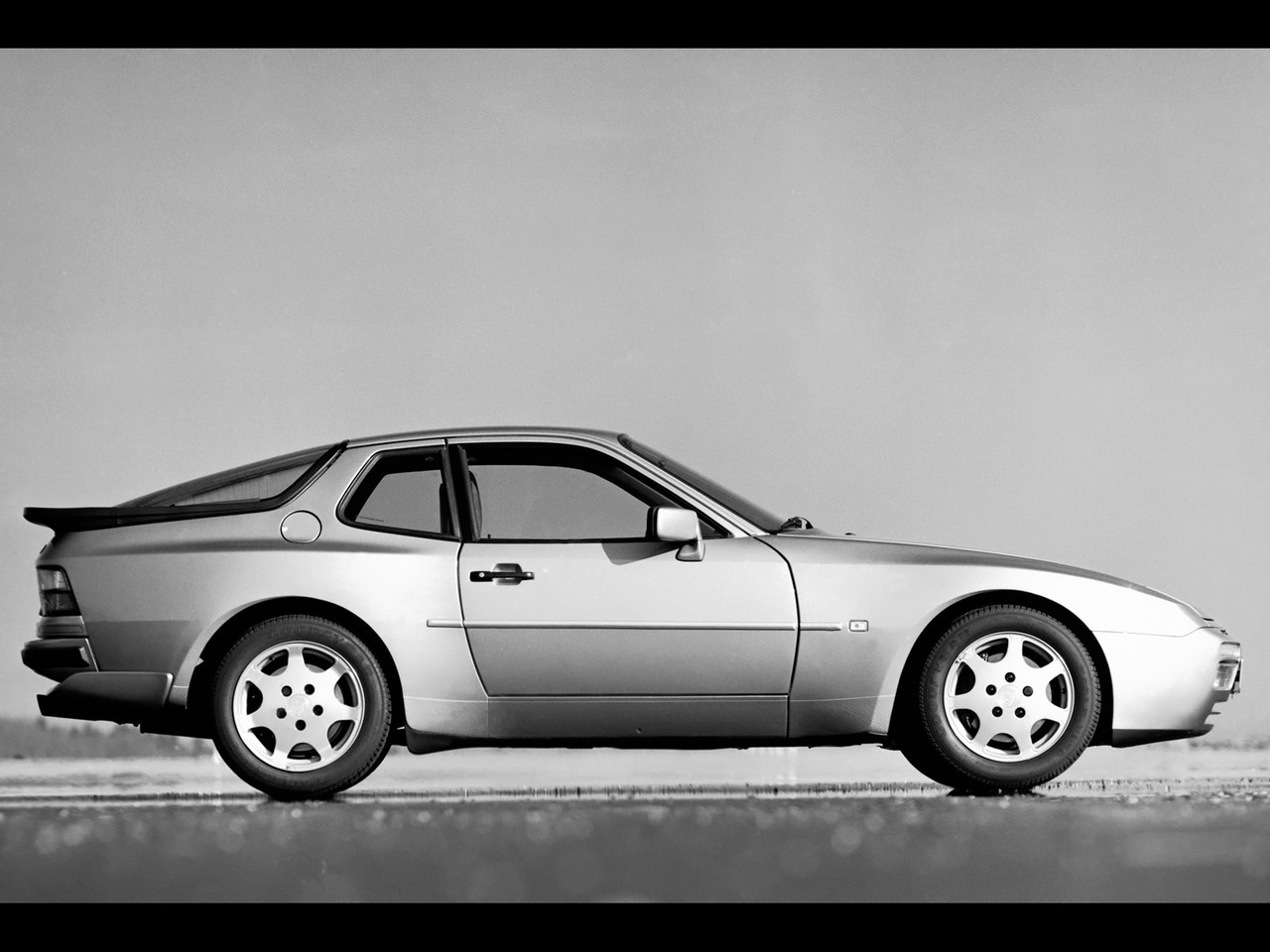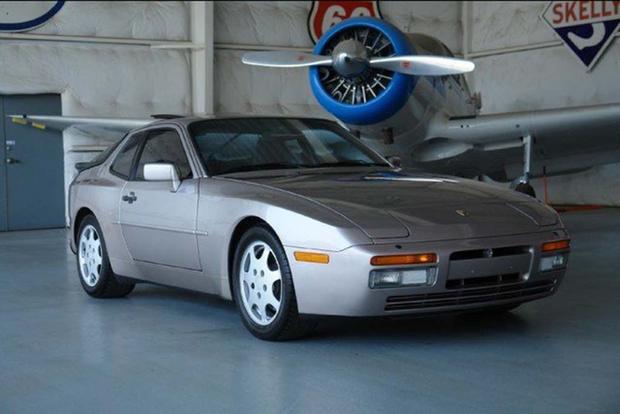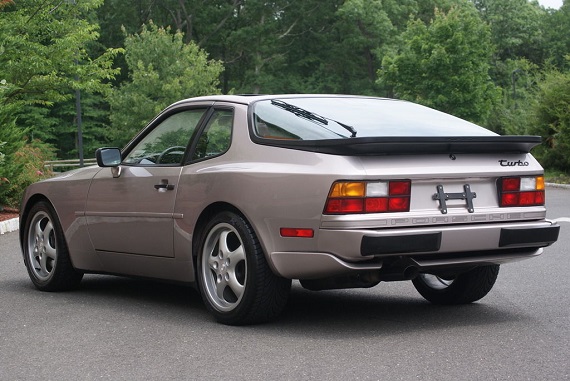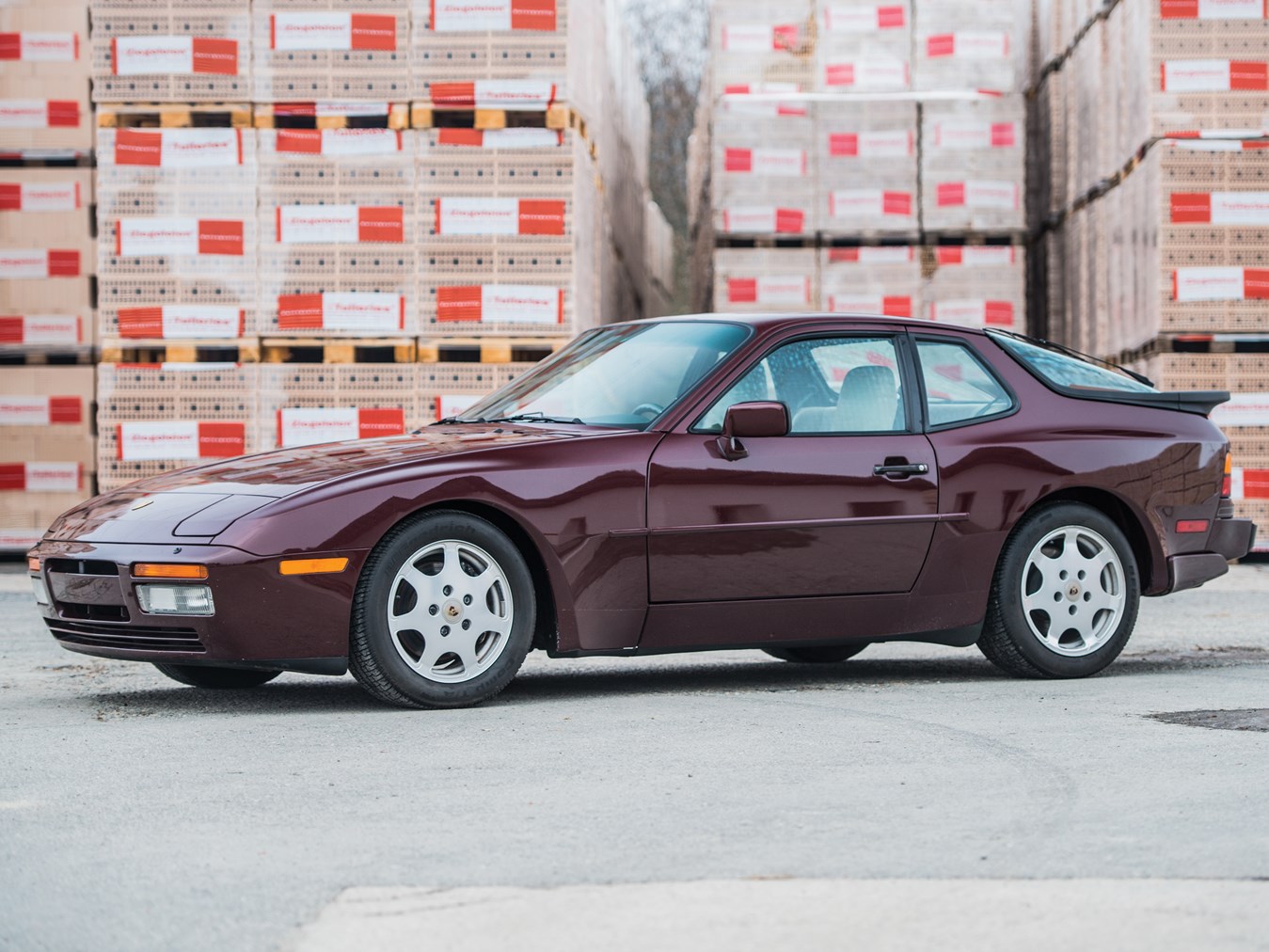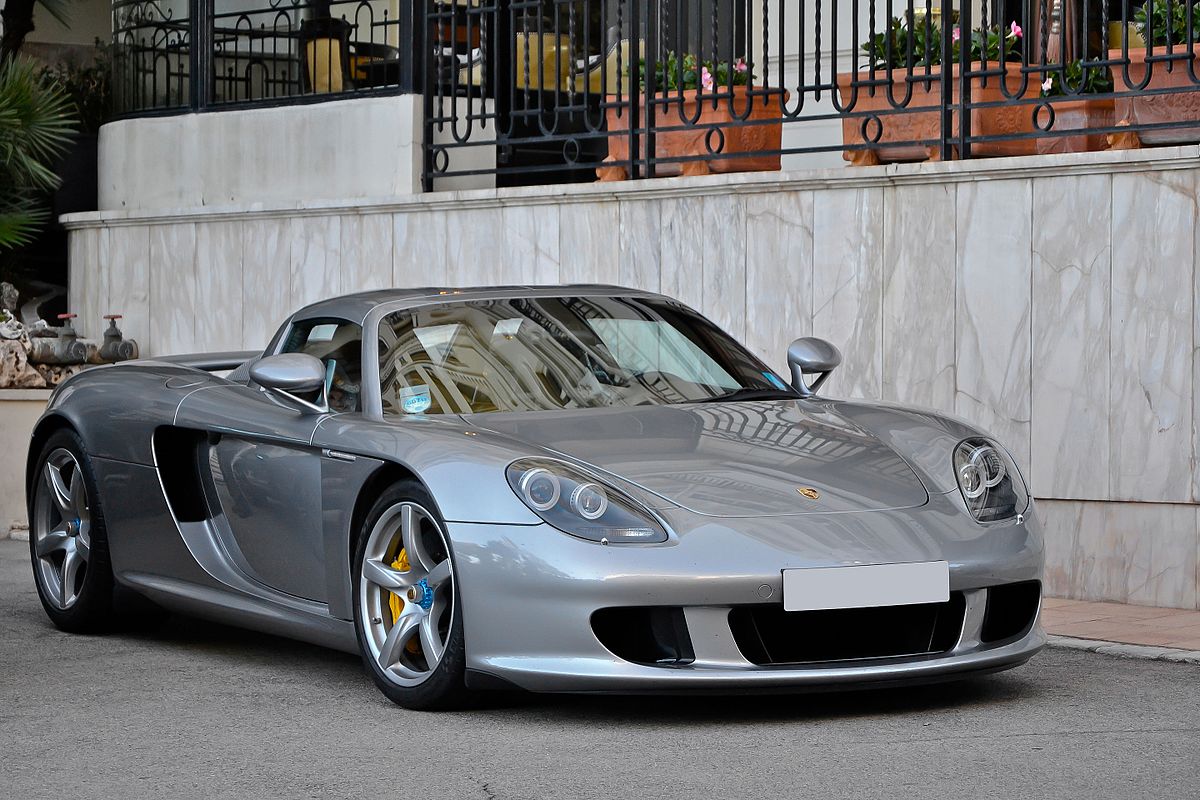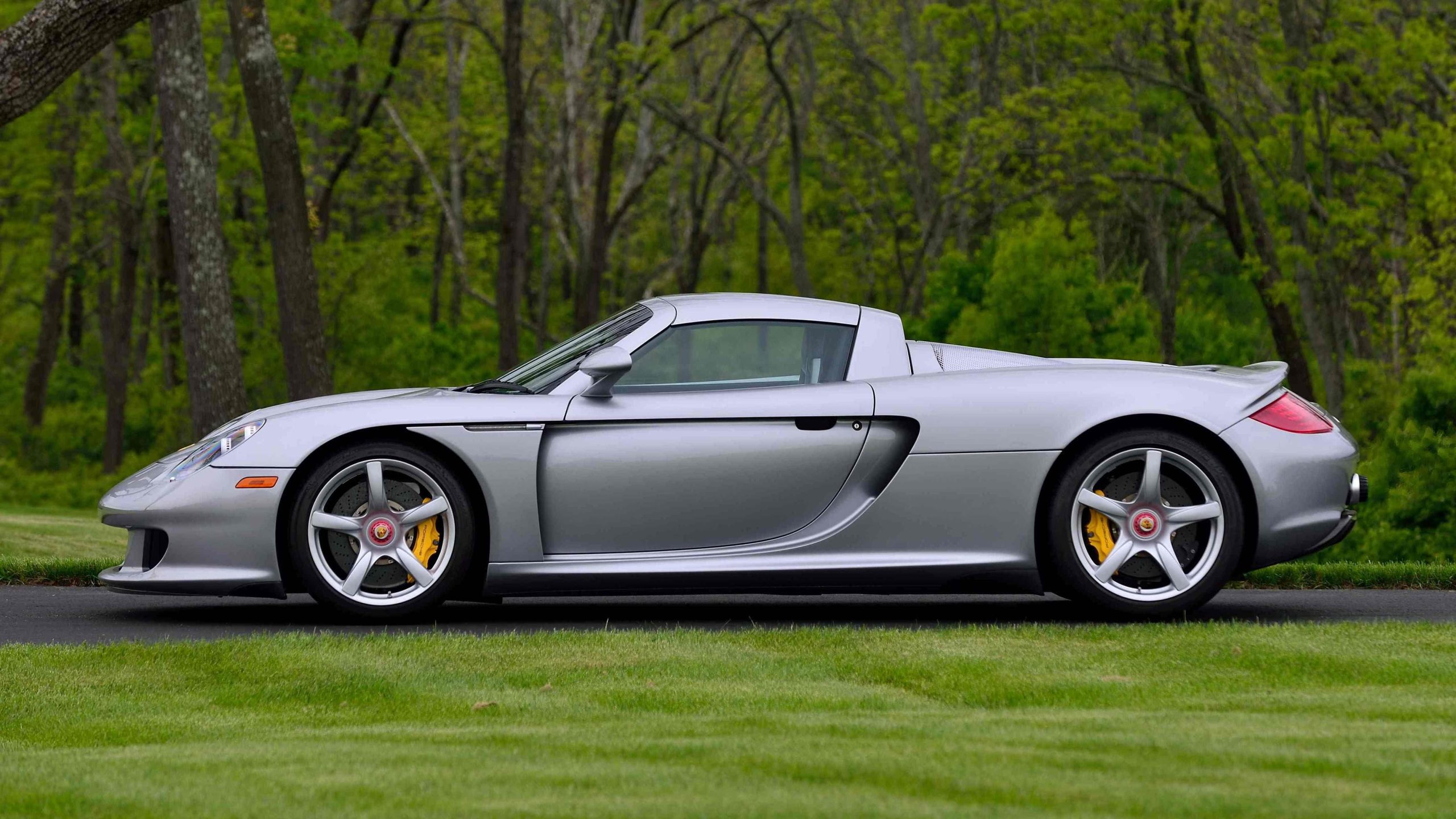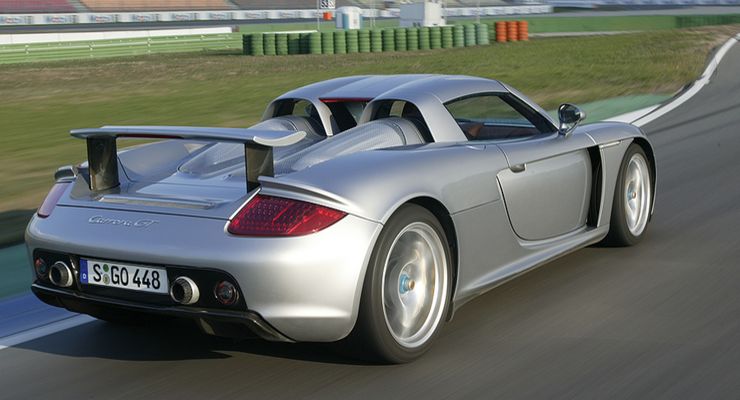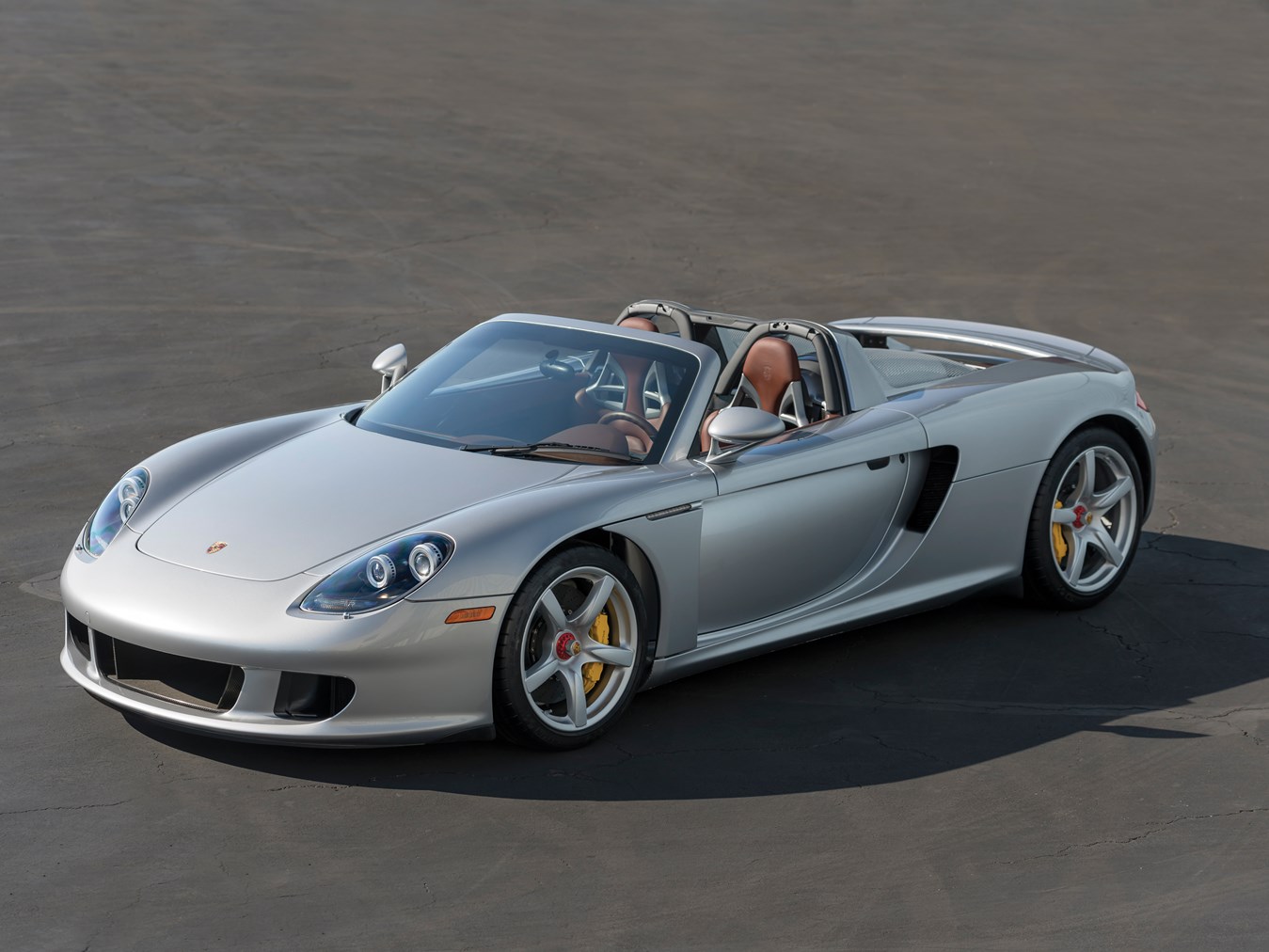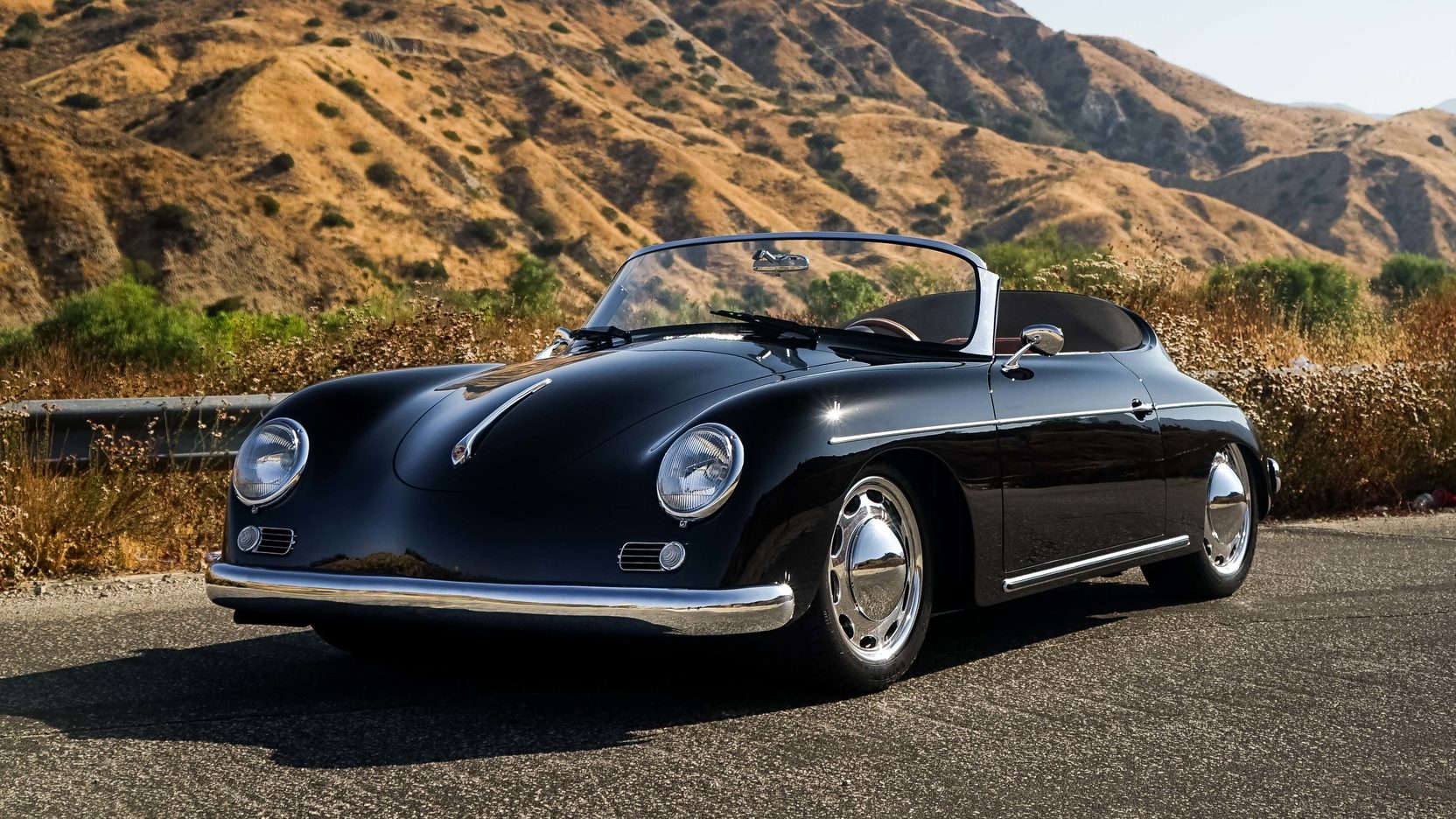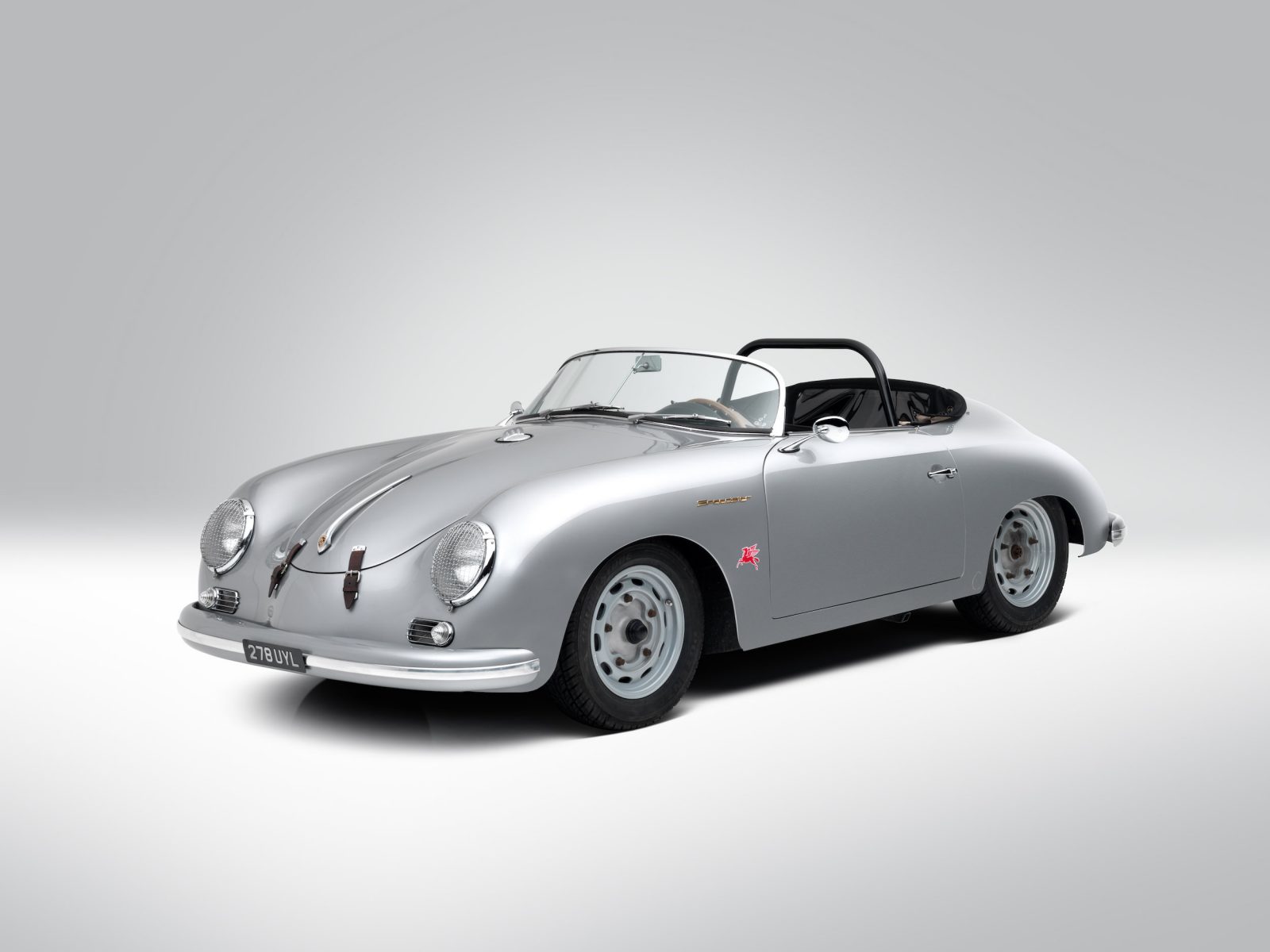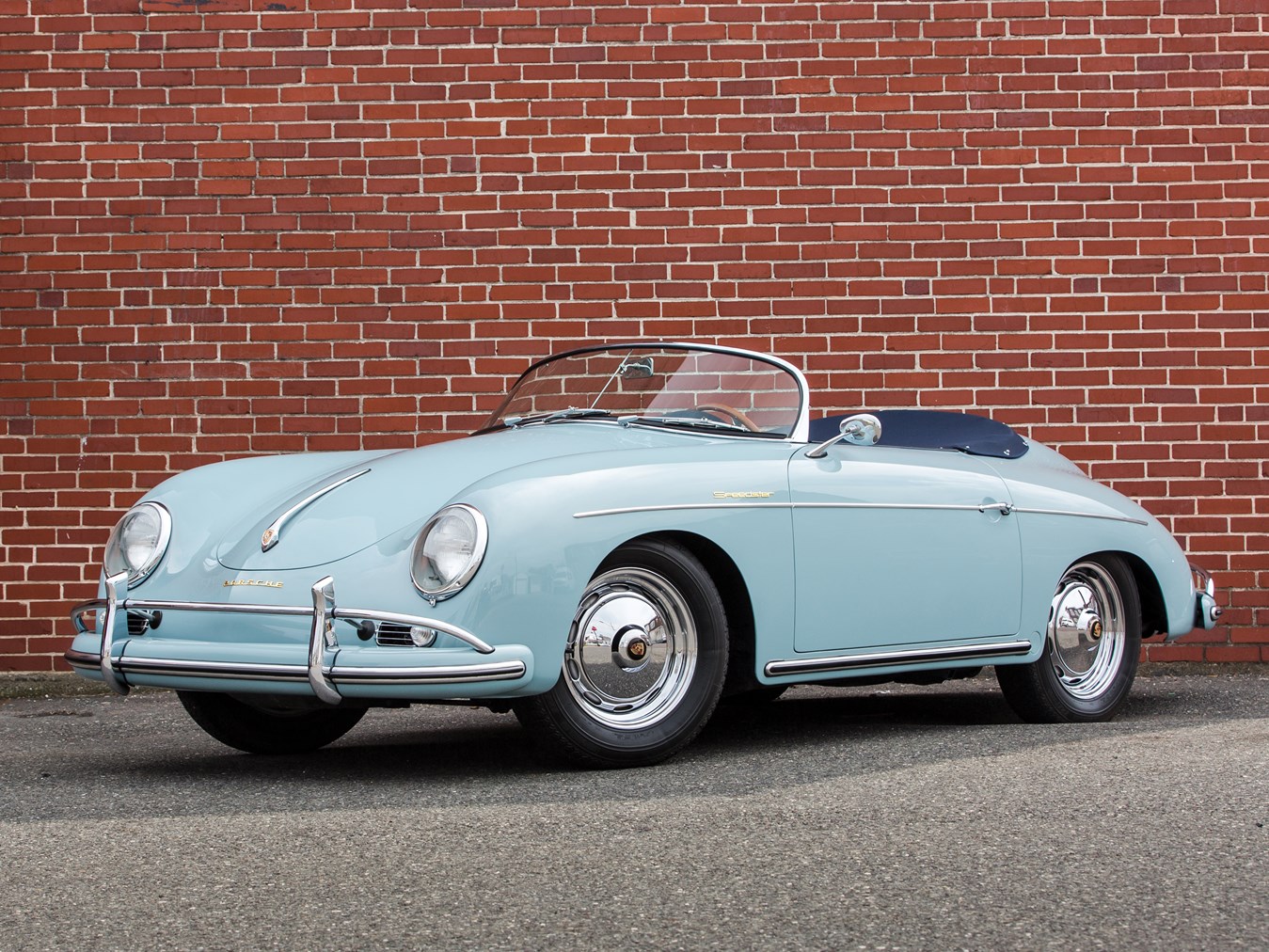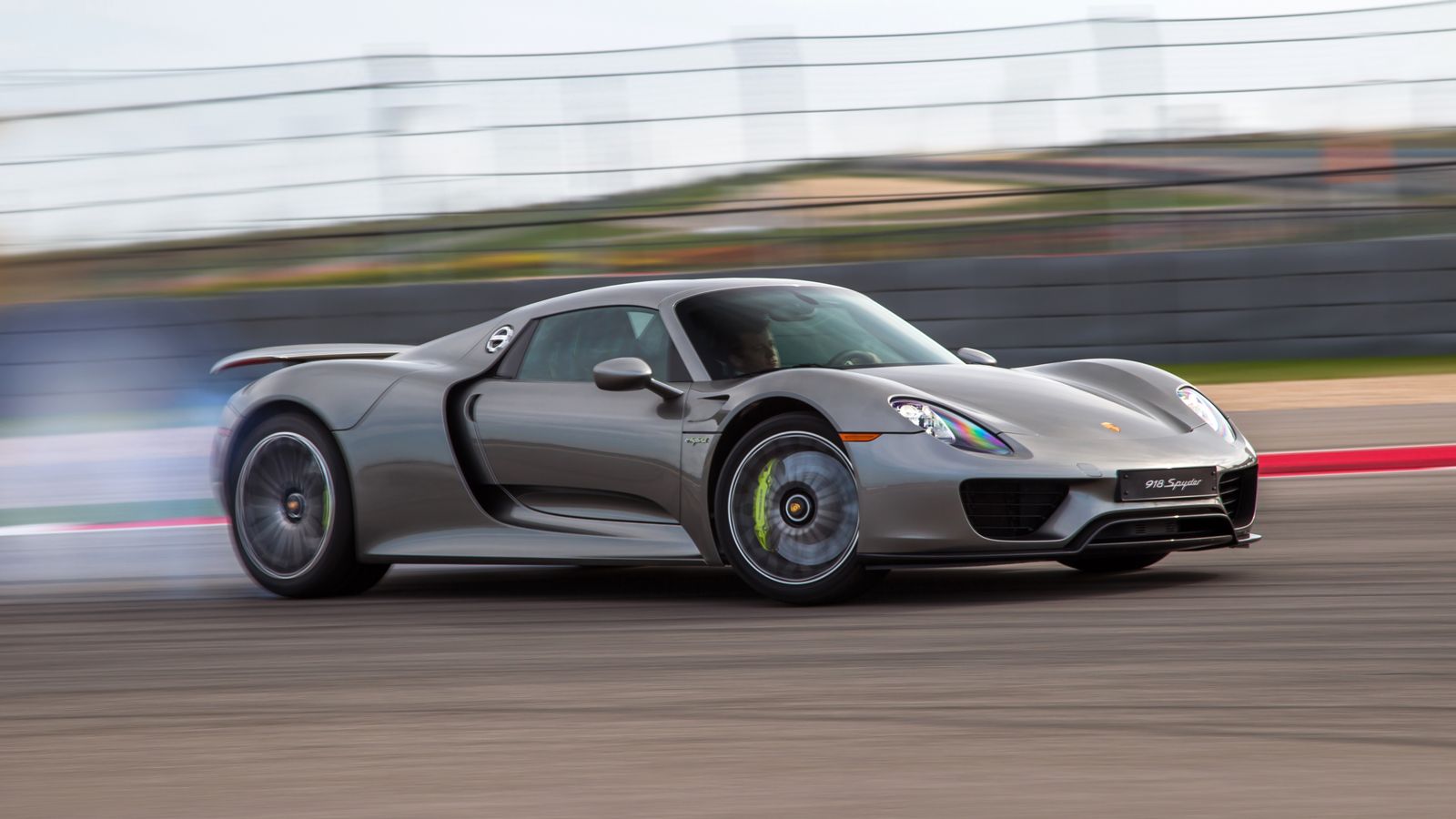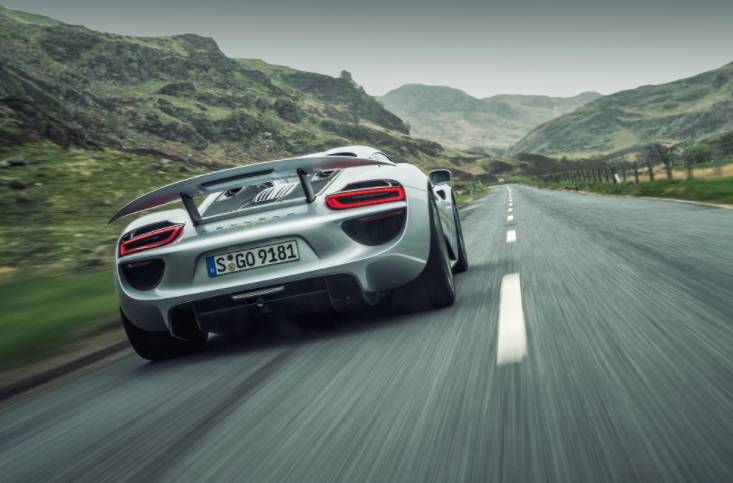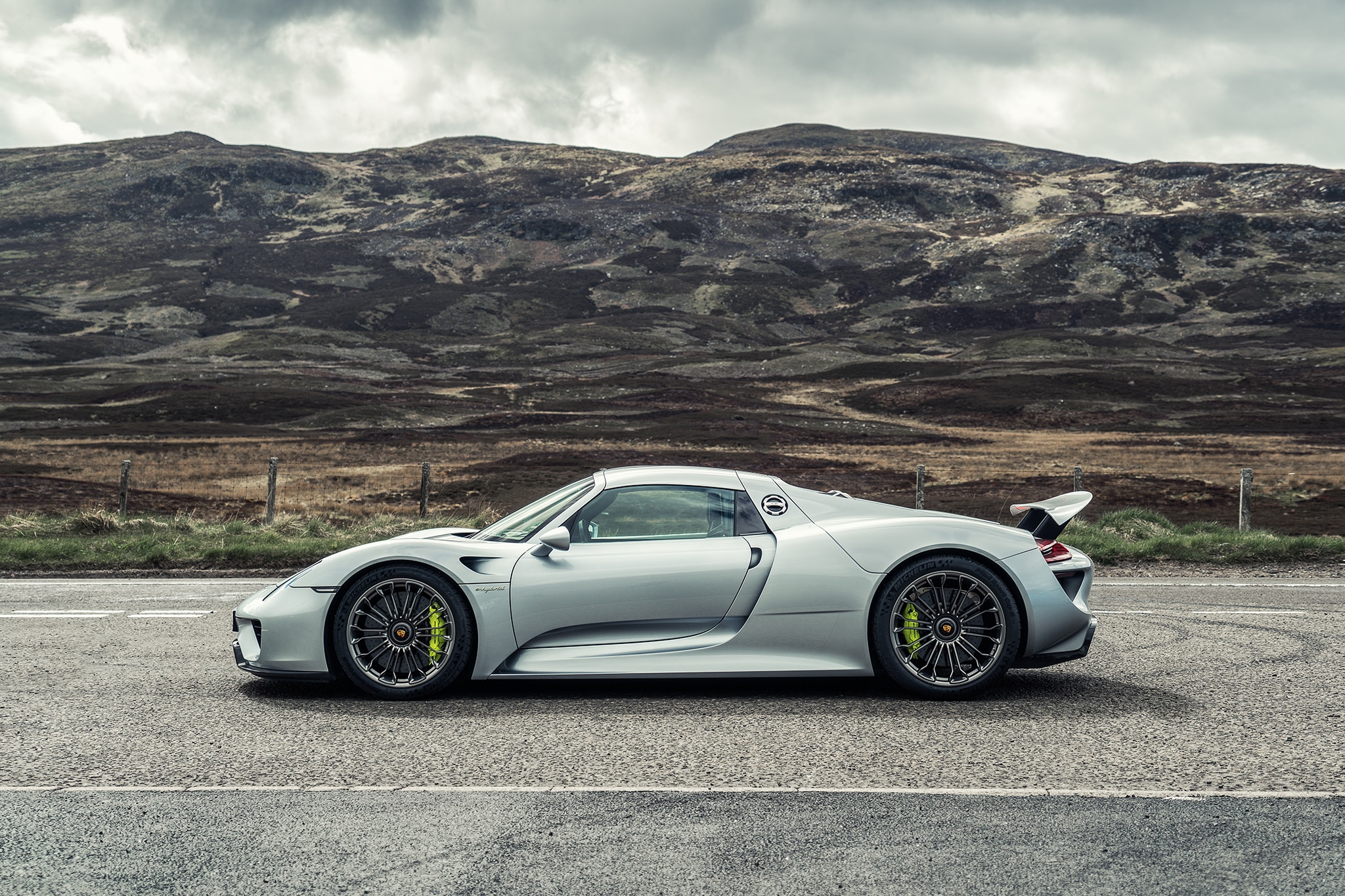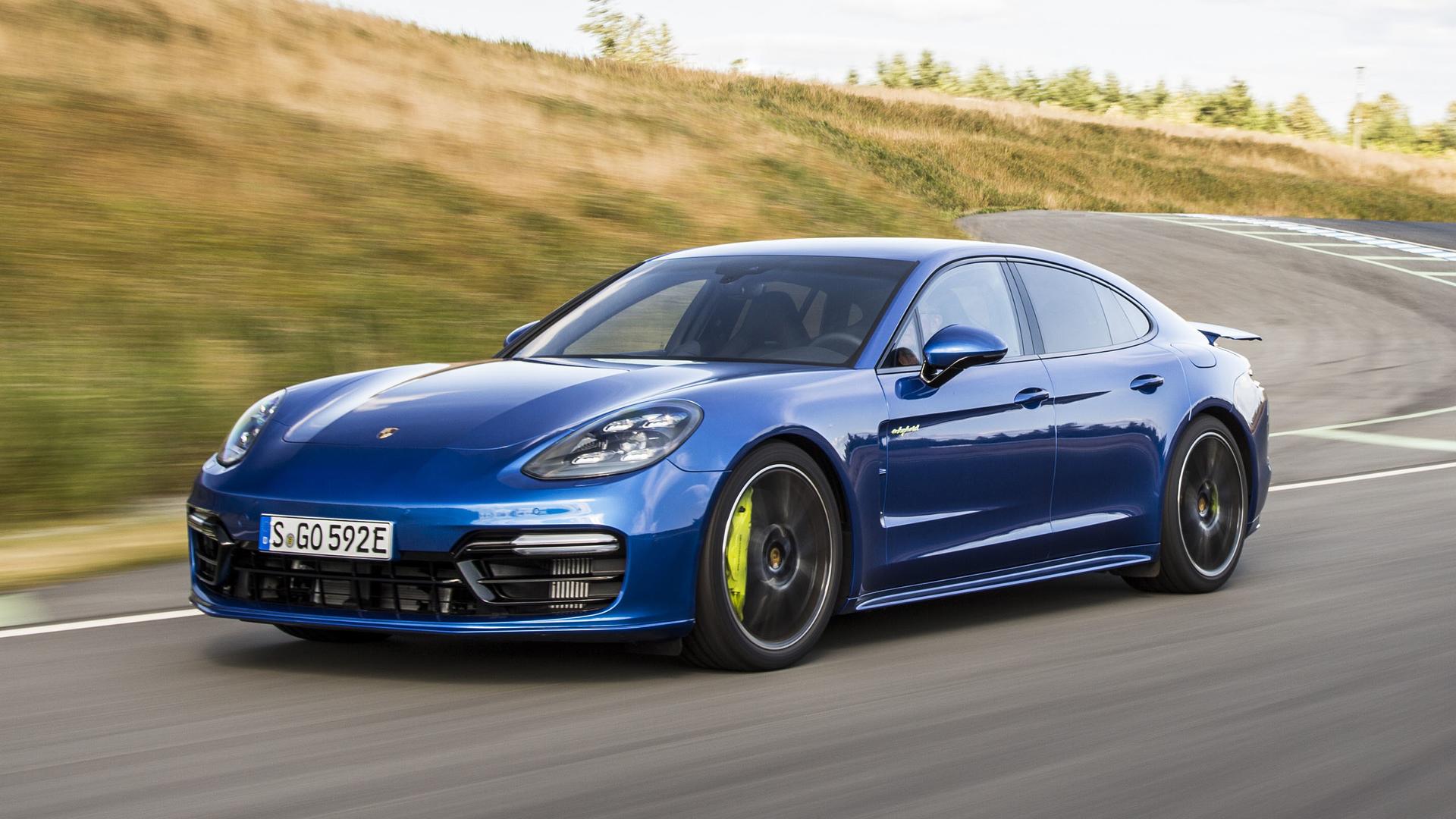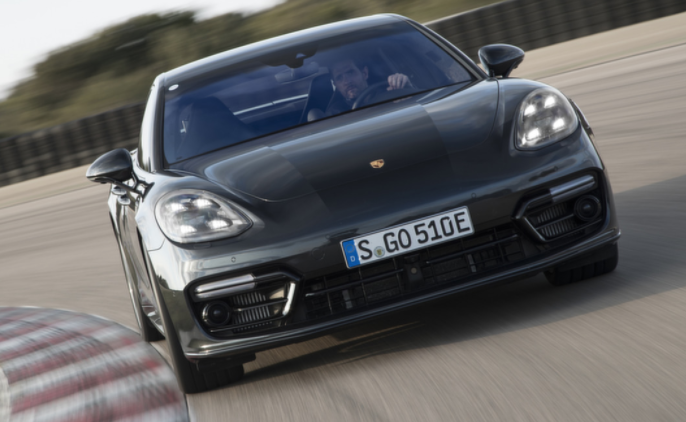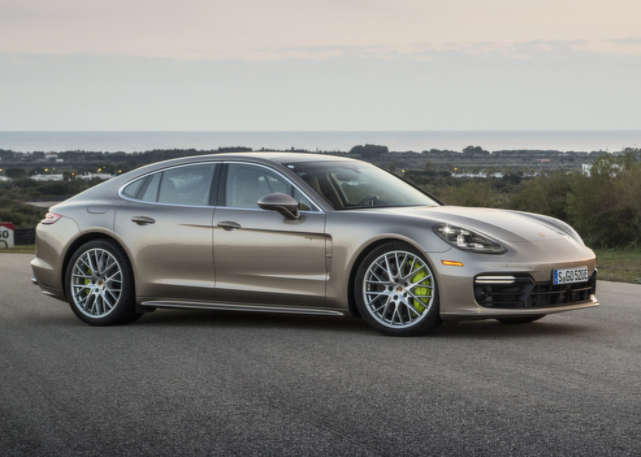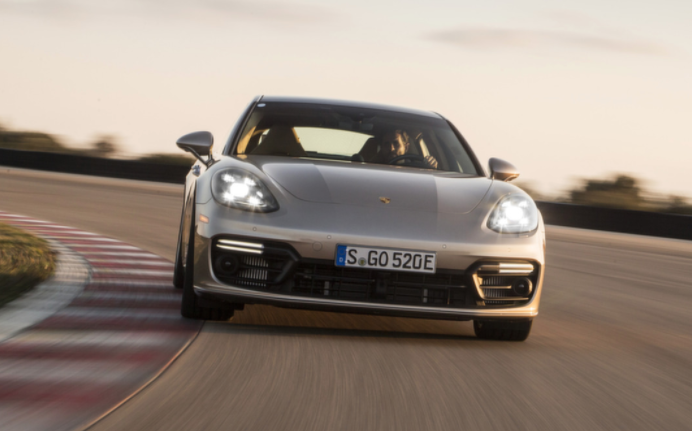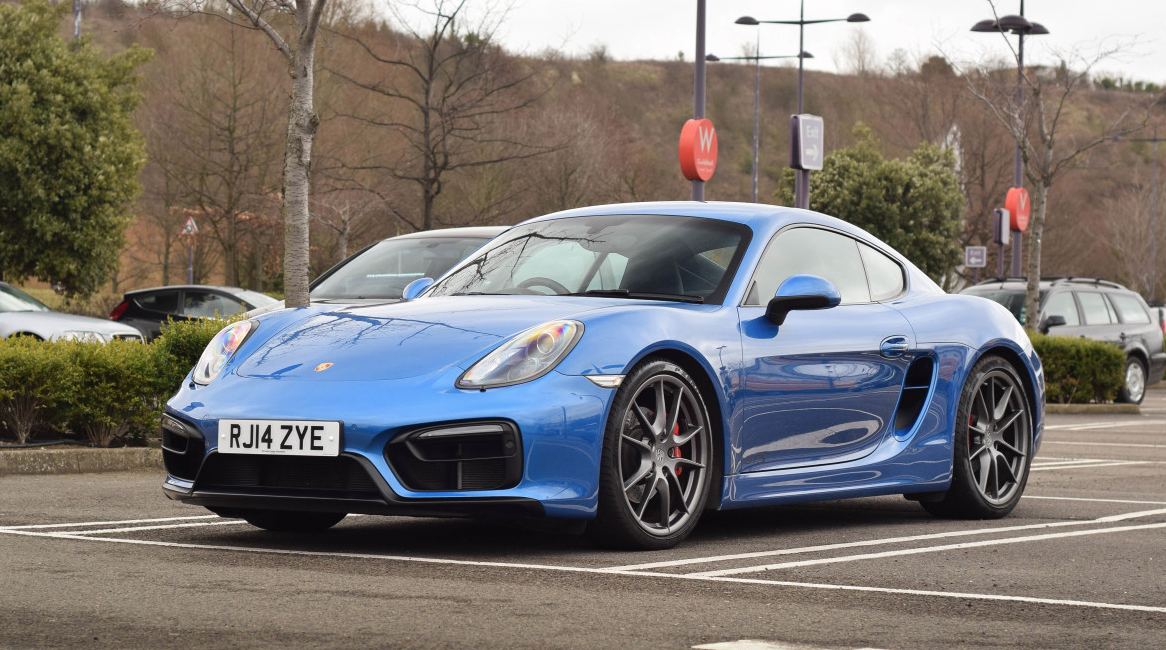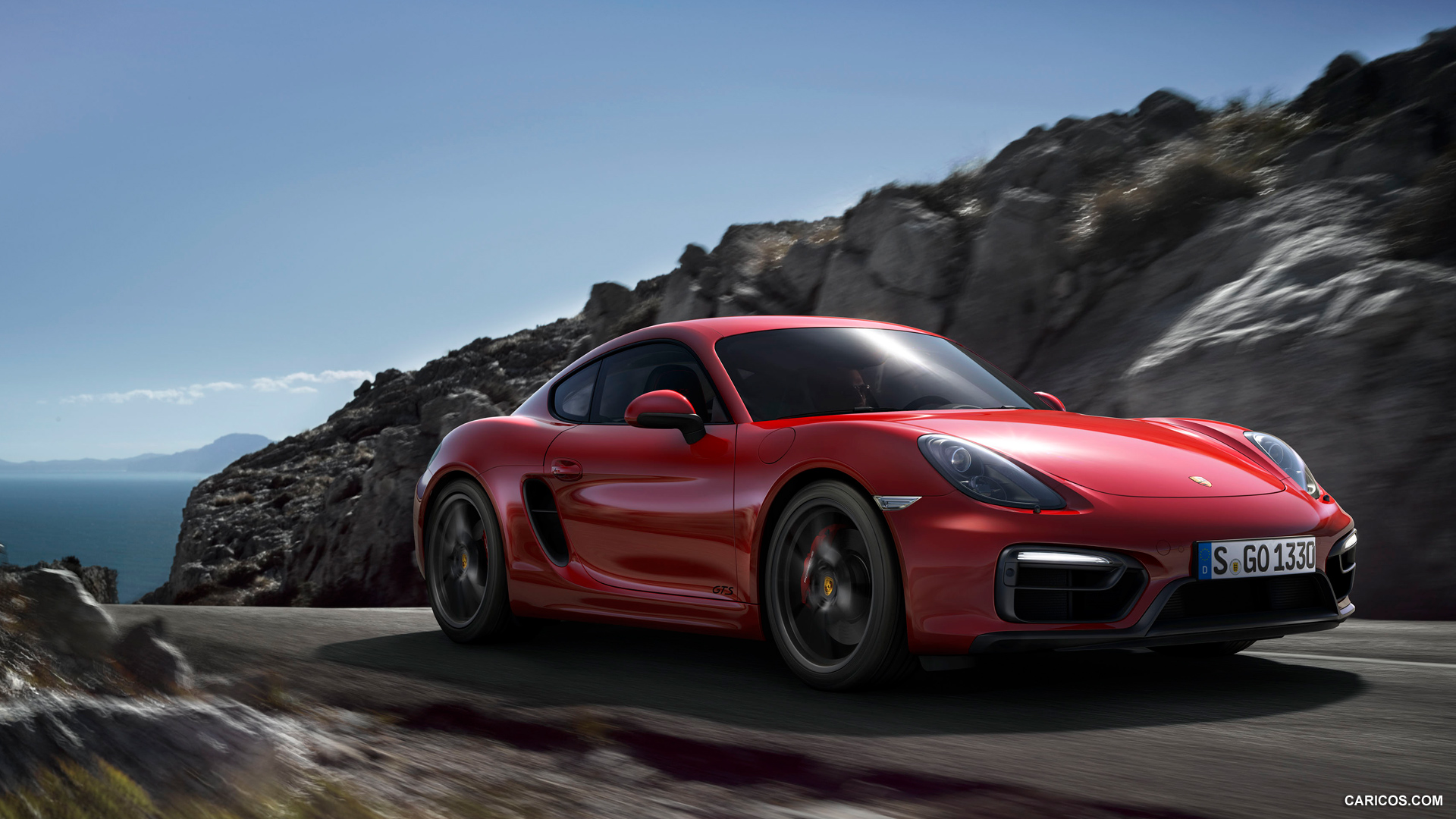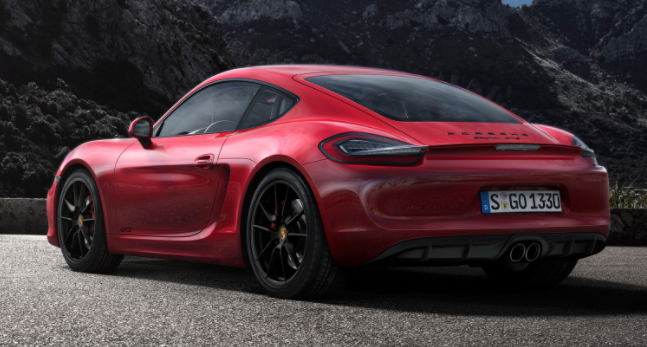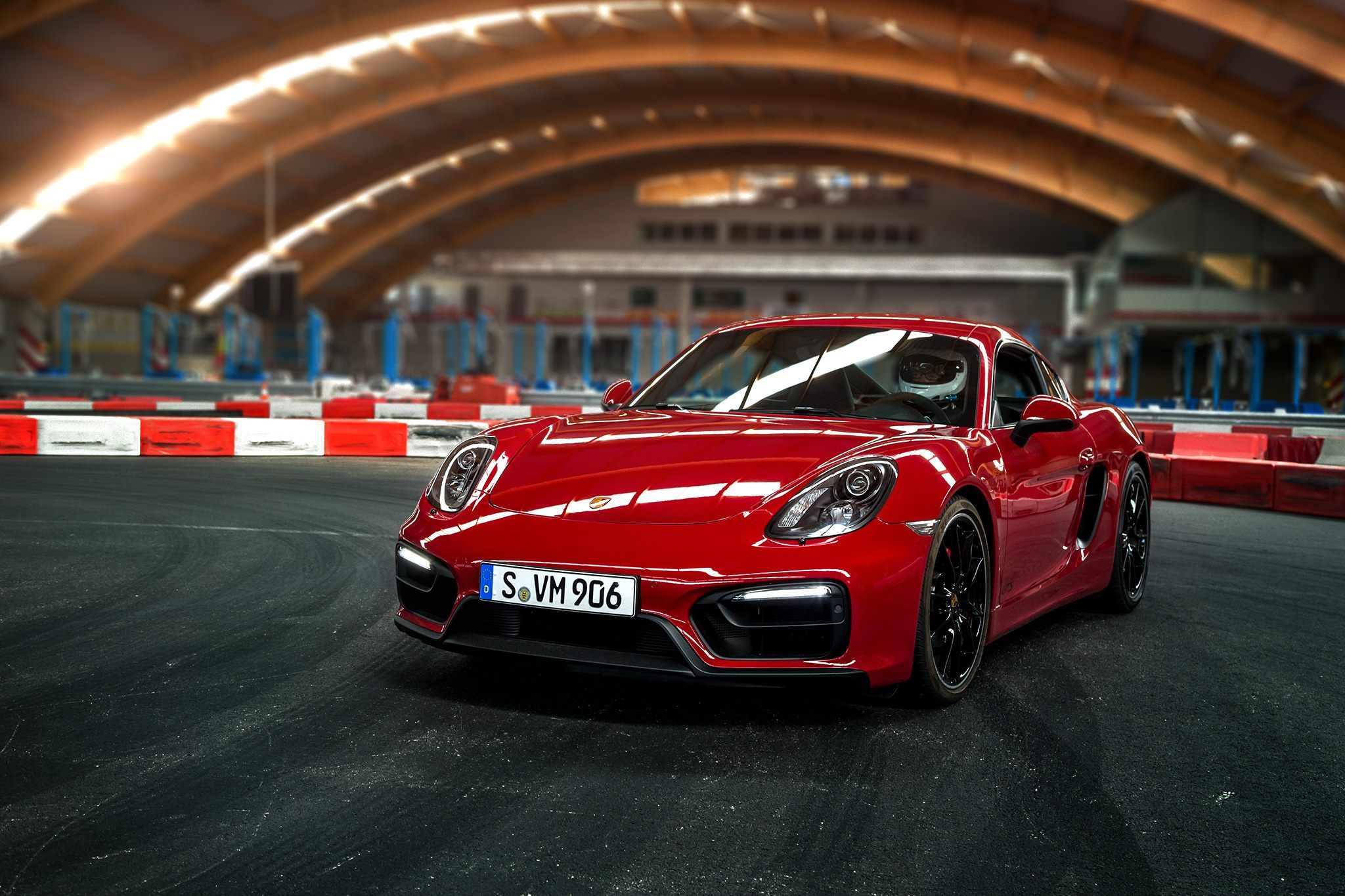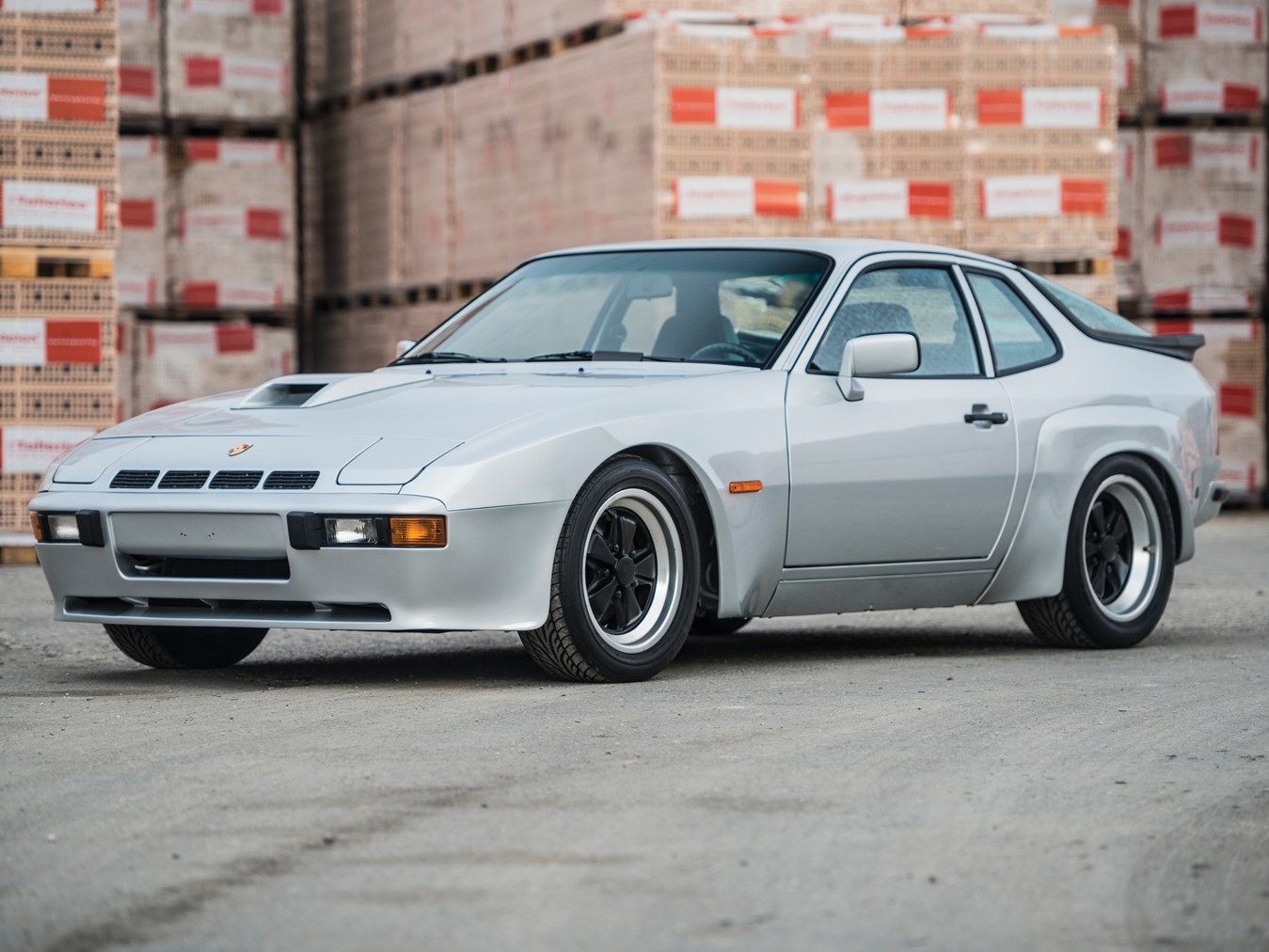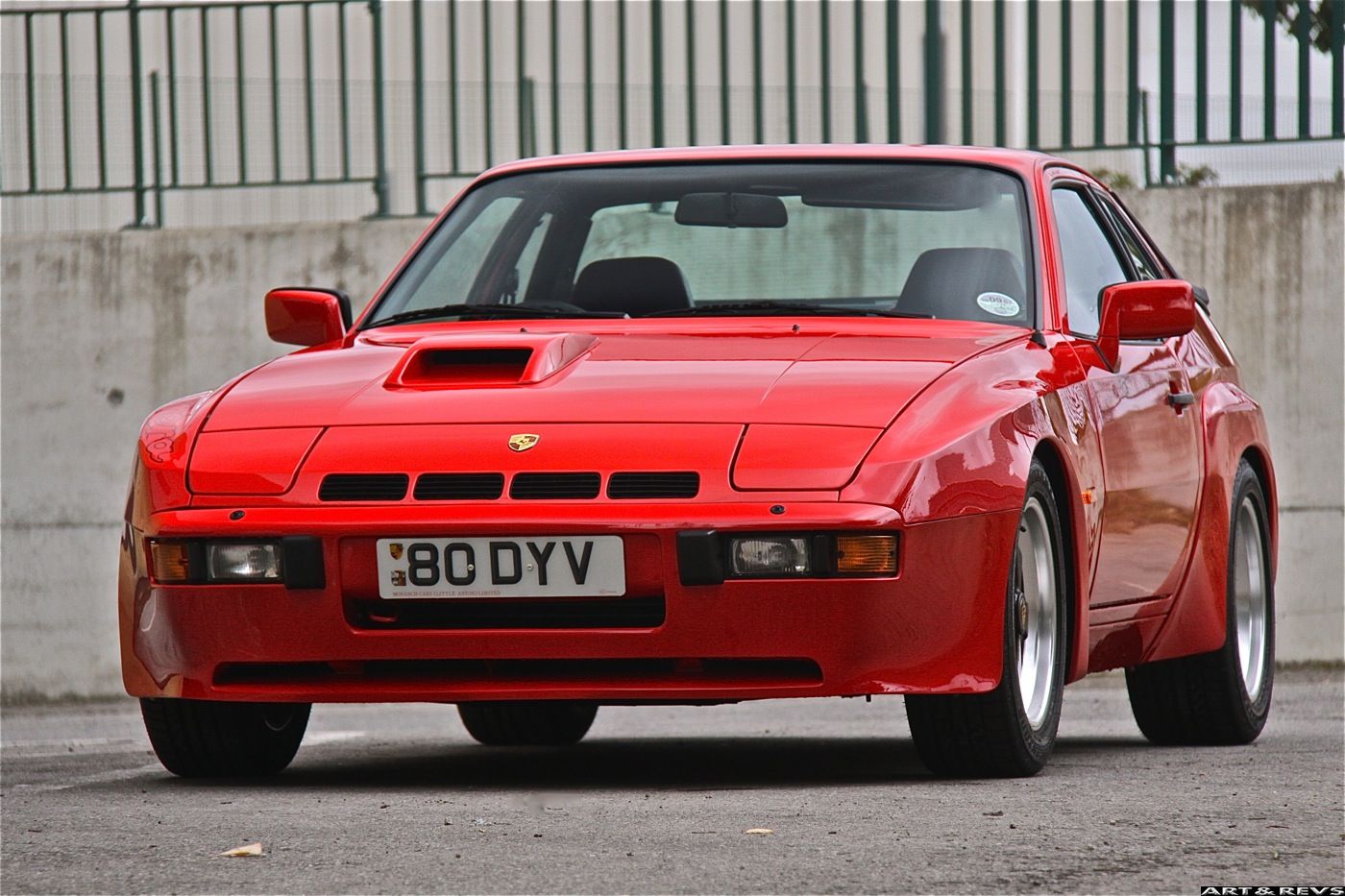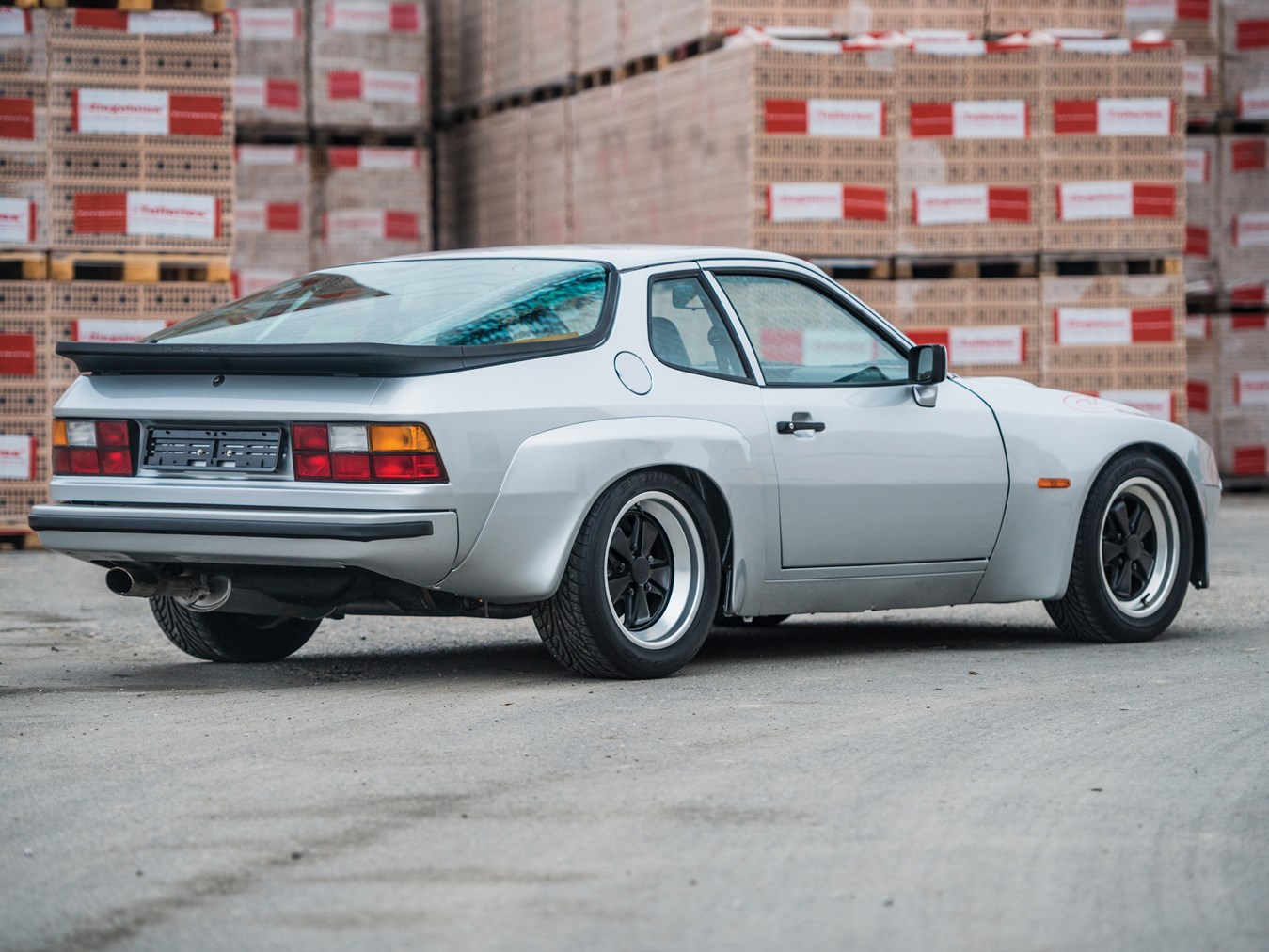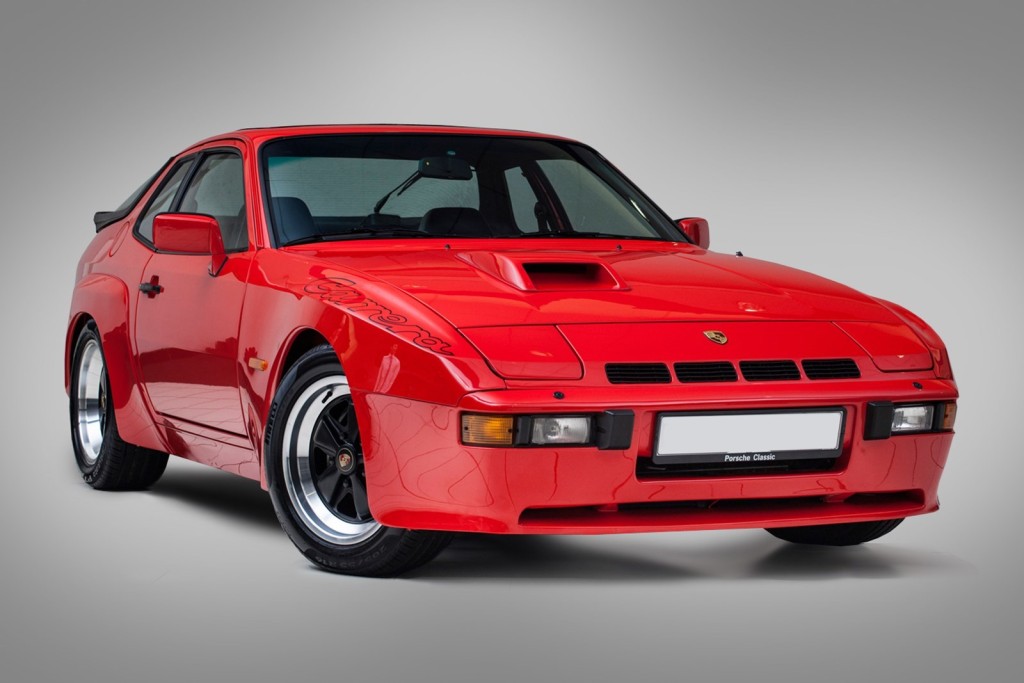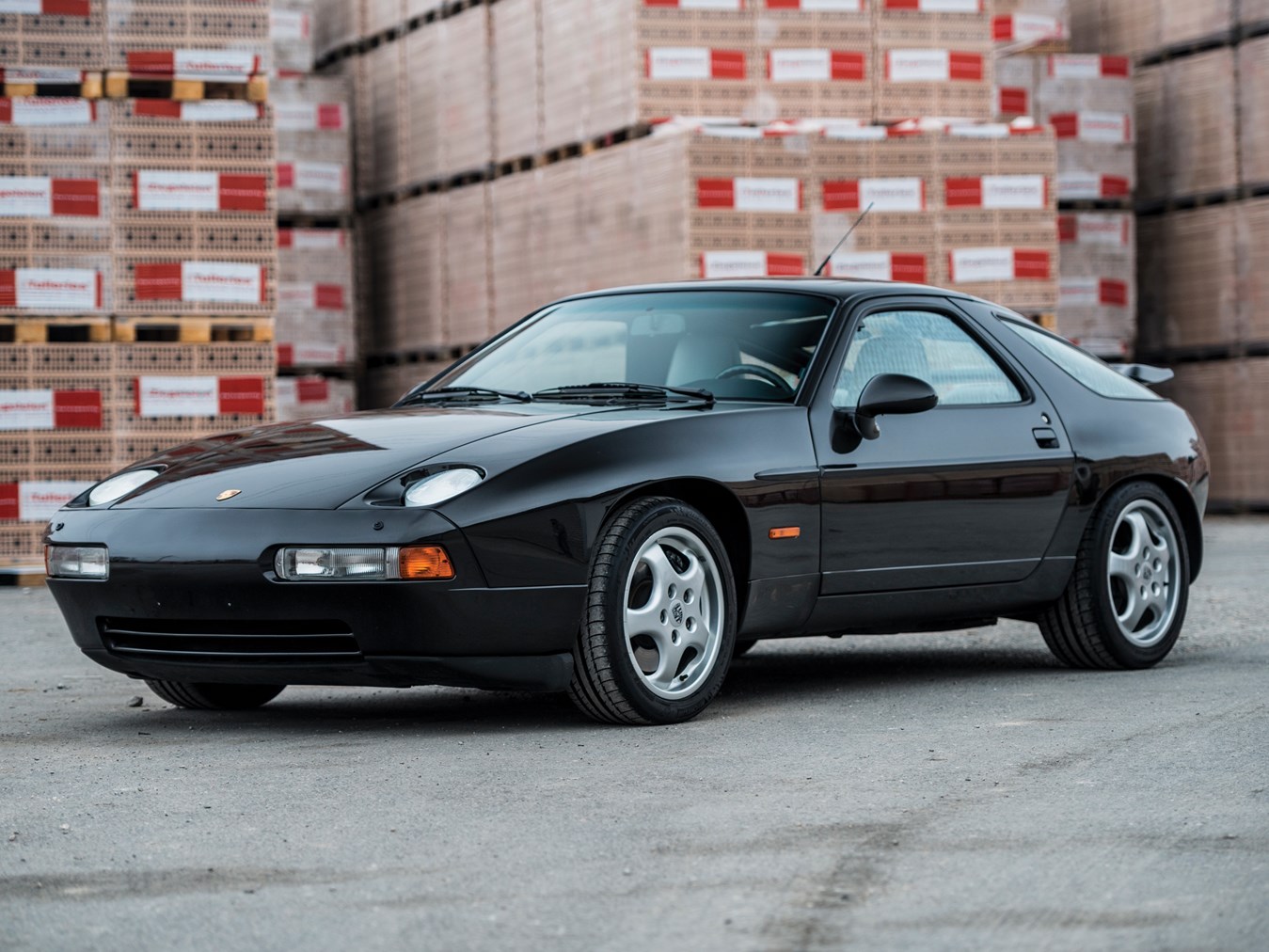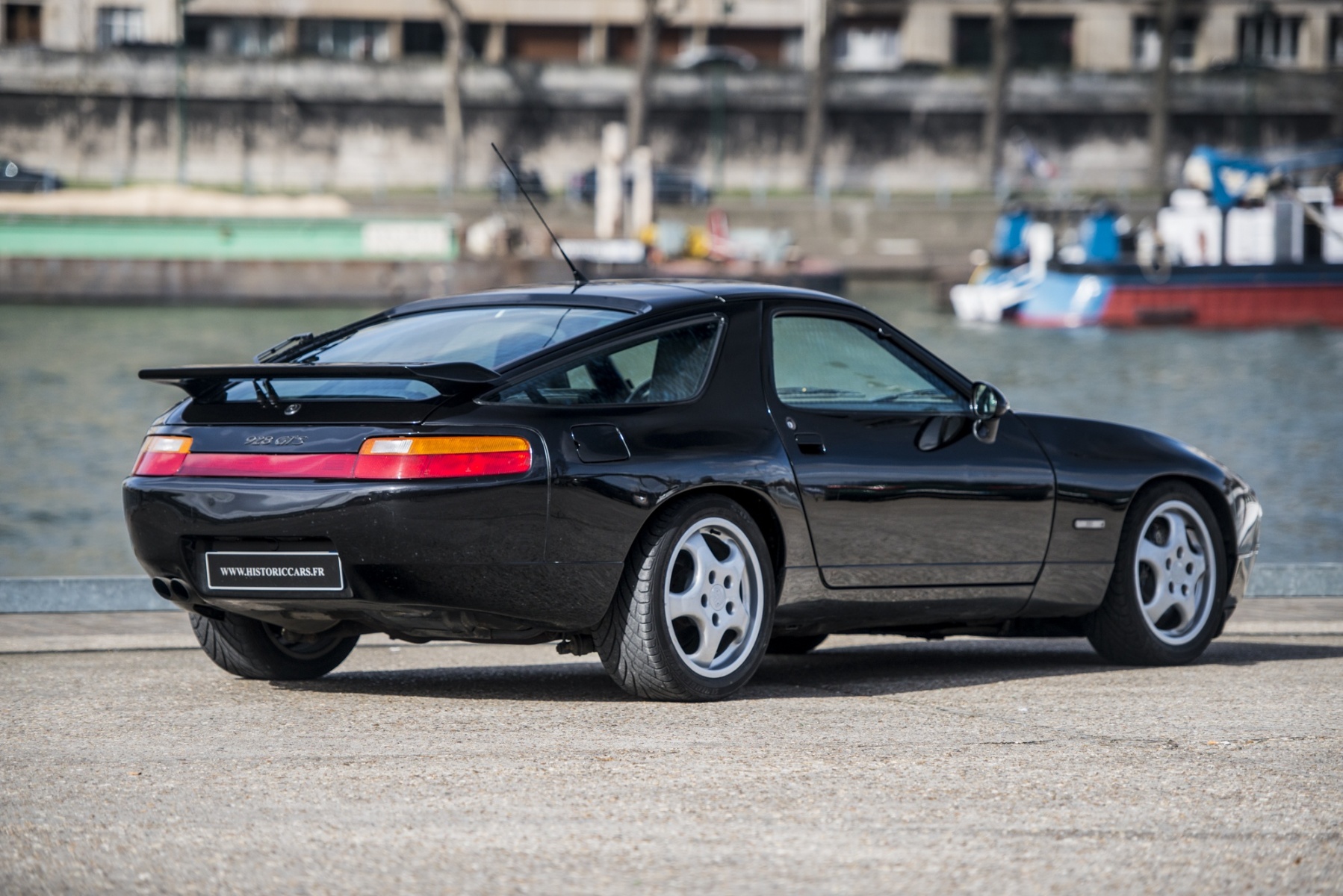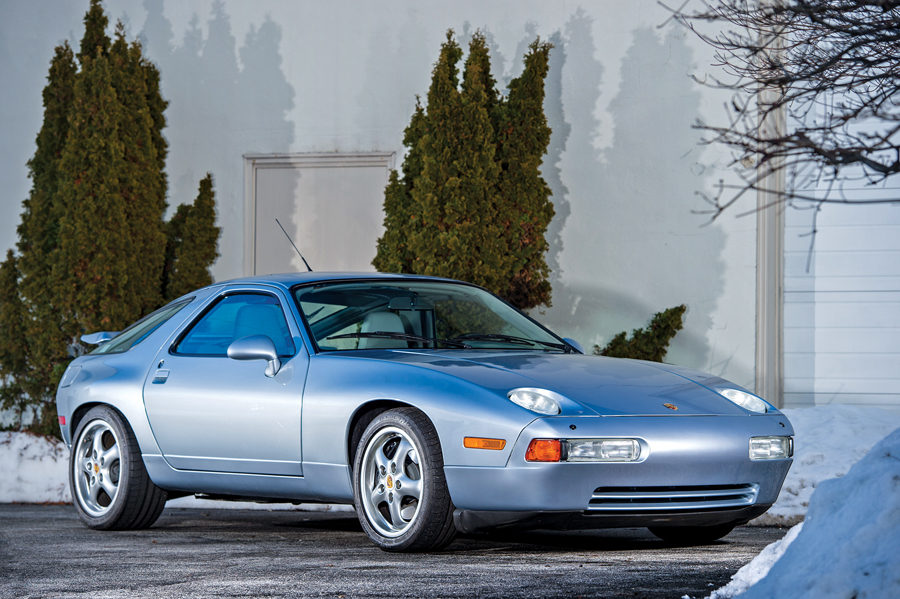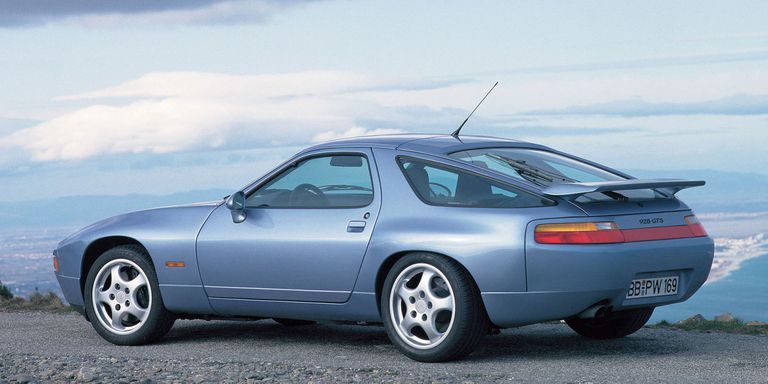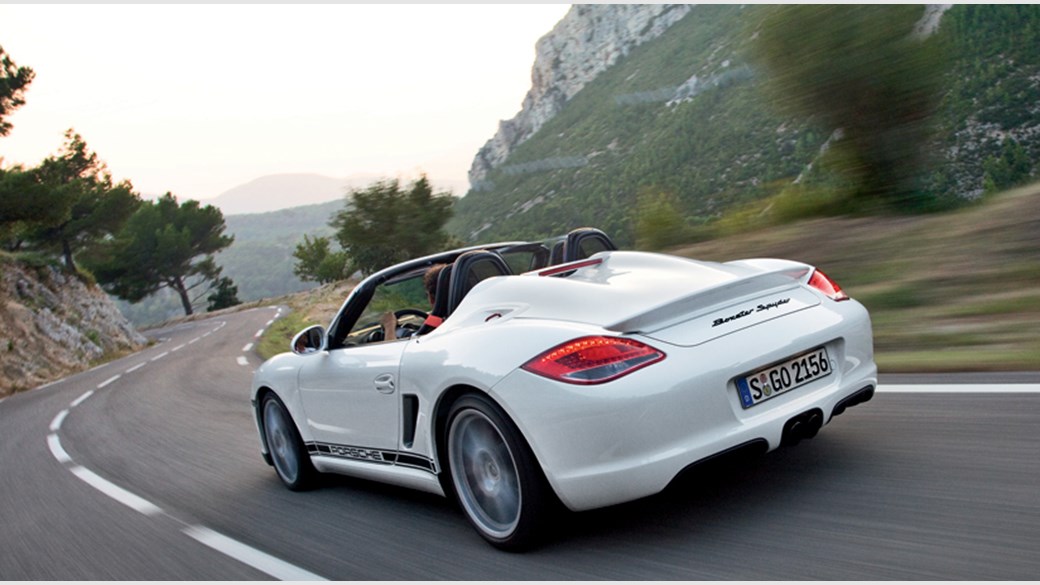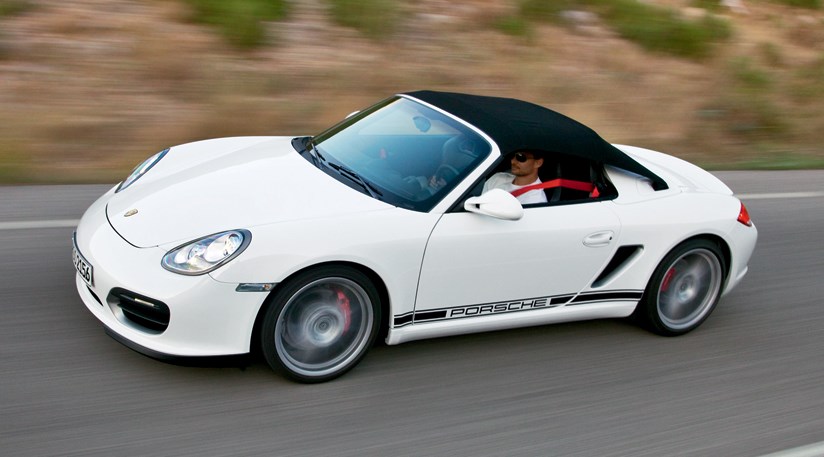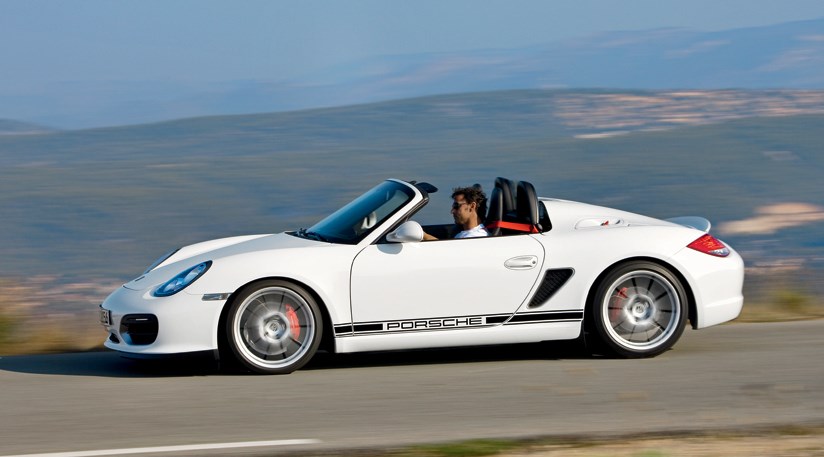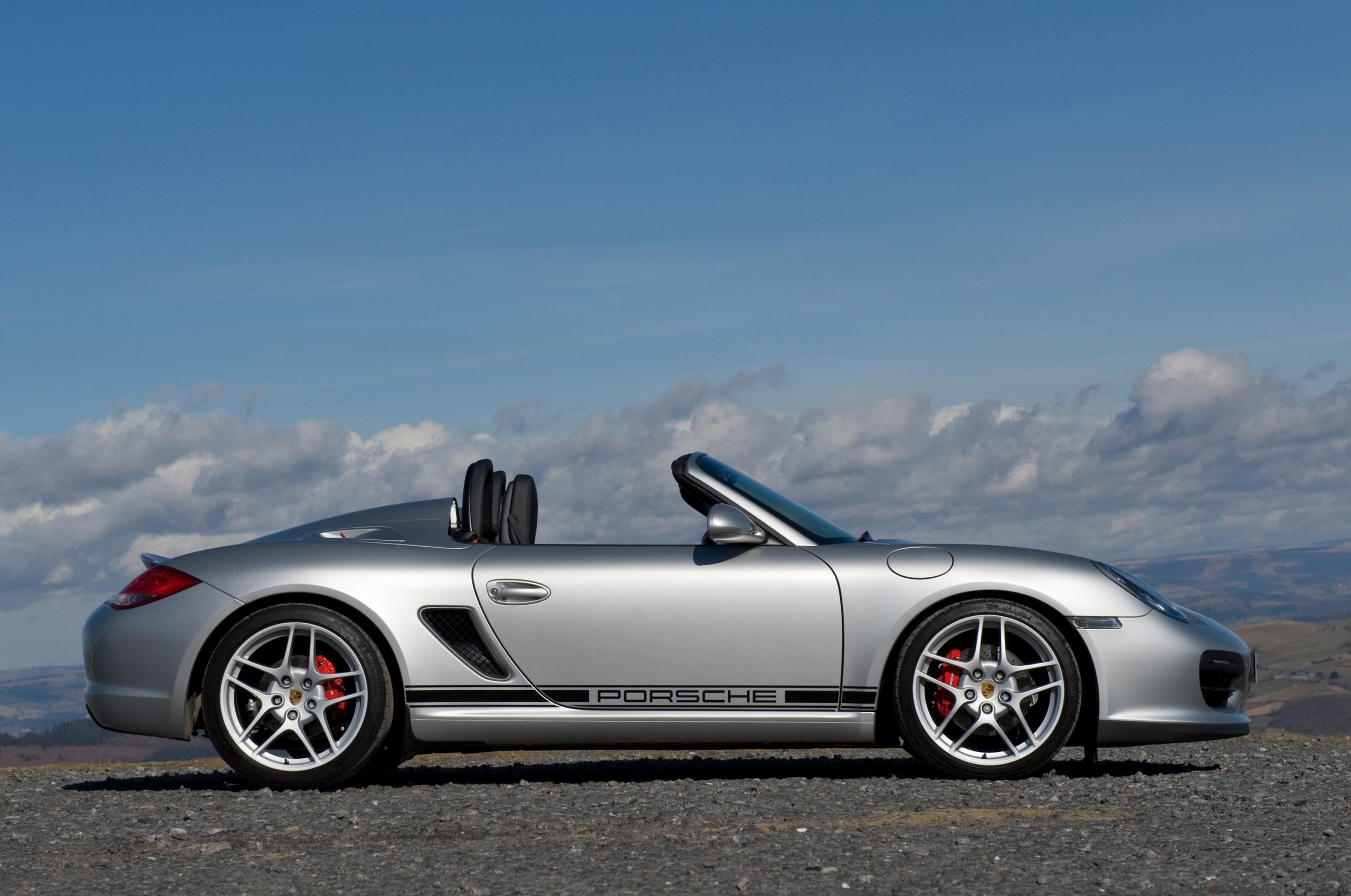Our List of The Most Awesome Production Porsches of All Time (Excluding 911 Models)
Best Porsches
Porsche Macan Turbo
Porsche 959
Porsche 550 Spyder
Porsche Cayman GT4
Porsche 968 Clubsport
Porsche 944 Turbo S
Porsche Carrera GT
Porsche 356 (All Models)
Porsche 918 Spyder
Porsche Panamera Turbo S
Porsche Cayman GTS
Porsche 924 Carrera GT
Porsche 928 GTS
Porsche Boxster Spyder
Porsche has always made awesome cars but any “best of” Porsche list always has a bunch of 911s on it. We decided to switch things up and focus on creating a list of the best non-911 Porsches. To make it more fun we also decided that race cars and concept cars couldn’t make the list (sorry Porsche E-Mission and Porsche 917). Most people focus on all the awesome 911s Porsche has made over the years (given we decided to spend weeks rating every 911 you can buy today clearly we have the same 911 obsession too). What most people don’t know is that Porsche has built some cracking non-911 cars over the years and while they are often forgotten these are some tasty machines that we would take any day.
This post is an ode to great Porsche cars that aren’t 911s. We picked some current models that we love that anybody can walk into a dealership and buy today. We also went back in time to a few of our favorite supercars and some forgotten regular models that are still relevant and fun driving cars for collectors and newbies to the brand.
There is a real breadth of accomplishment in the cars. We loved driving the Boxster Spyder which is a super focused and lightweight version of Porsche’s most affordable model. We were as smitten with a Cayman GTS that you can buy for reasonable money on the used car market as we are with the rare and expensive Cayman GT4. They are based on the same car and yet they are so different and both deserved their place on the list. Going further back and the 944 and 928 remind us of the days when Porsche’s future was unclear. These fringe models helped grow the Porsche brand and fan base and fast forward to today, these fringe cars make up the balk of Porsche sales. The Macan Turbo and Panamera Turbo S easily outsell the 911 and both are awesome cars with true Porsche DNA. Let the purists cringe, we say yes to more Porsche models.
Then there are the supercars. Similar and yet so different they were arguably the leading cars of their respective eras. The Porsche 959 was the most technically advanced car of its time by a massive margin. Years later and the Carrera GT wowed supercar fans with its advanced design and race spec engine and yet it is known today as a back to basics supercar devoid of driver aids that is reminiscent of supercars of old. Almost 30 years after the 959 the Porsche 918 Spyder does the same thing as the 959 and tells us about the future.
The non-911 cars that Porsche built are just as important to the history of this storied brand and to the automotive industry as a whole. To Porsche, please keep them coming.
Macan Turbo (with Performance Package)
The Macan Turbo (with performance package) is a compact SUV that is all about performance. Five doors, five seats, decent space for the family and a 440-hp twin-turbo V-6 mated to a seven-speed transmission with all-wheel drive. The $10k performance package gets you an additional 40 horsepower and 36 lb-ft of torque over the Turbo Macan and we say it is totally worth it.
It is crazy fast and we guarantee that any purist will fall in love with this diminutive Porsche daily driver. For that extra money you also get lower ride height, 5mph higher top speed, standard sport exhaust, Sport Chrono package and bigger front brakes. The interior is handsome but small. As with all Porsches, performance comes at a steep price; if you want to blend serious performance with versatility, however, the Macan Turbo has few peers.
Blistering acceleration, sports-sedan handling, athletic silhouette. At the test track, its 3.7-second zero-to-60-mph run and 12.4-second quarter-mile beat those of the already blistering Macan Turbo by 0.5 second each. A relatively low seating position gives it a sports-sedan feel from behind the wheel, and the Macan’s weight transfers fluidly and predictably through corners.
Sure, you won’t confuse this Porsche’s steering feel with that of a Boxster or a 911, but its precision is unimpeachable and for a 4500 pound crossover is way better than you imagine it should be. This is a daily driver that goads you into driving harder, with sky-high cornering limits and progressive controls that instill confidence no matter the speed. Pin the throttle while exiting a corner and the car squirms for a beat as the all-wheel-drive system and the optional torque-vectoring system quickly work out the best way to send all that power to the ground.
Porsche 959
Next up we have the Porsche 959, a car that was so far ahead of its time that we still see modern cars with less tech today. With less than 300 units ever made this car is rare and expensive.
This was officially Porsche’s first supercar and was developed and manufactured by Porsche from 1986. The car was initially developed to function solely as a B rally car. Later, to meet FIA homologation regulations, Porsche developed a commercial production variant of the car, with the understanding that they’d produce at least 200 street-legal units to be in compliance with the race requirement.
When it was introduced in 1986, the Porsche 959 was immediately identified as the world’s fastest street-legal production car. It was a tech masterpiece. Equipped with all-wheel drive, ABS, TPMS, and a six-speed transmission, it was way ahead of its time, and remains one of the most desirable Porsches ever made. It had magnesium wheels with run-flat tires, and its 444-hp flat-six engine introduced the brand to sequential turbocharging. The 3,500 lb 959 got from 0 to 60 in 3.6 sec (faster than most of today’s Porsche 911s) and onto a top speed of 190 mph (in 1986).
The road version of the Porsche 959 was introduced to the world at the 1985 Frankfurt motor show. The car was manufactured in two trims – “Sport” which corresponded to the race version of the car, and “Komfort” (comfort), which corresponded to the road version. First customer deliveries of the Porsche 959 began in 1987. Production ended in 1988 with a total of 292 Porsche 959’s rolling off the assembly line. In total, 337 cars were built, including 37 prototypes and pre-production models. More about the Porsche 959
Some other cool 959 videos Porsche 959 driven | evo ICONS, Top Gear 959 vs Ferrari F40
550 Spyder
Originally seen as just the next project number for the Porsche factory, the number ‘type 550’ rewrote motoring history and soon became known simply as the ‘Giant Killer’. It was Porsche’s first purpose-built racer and is known most famously as the car that James Dean was driving when he was killed.
Positioned between type 549 – the design of a truck transmission and type 551 – a three speed gear box design, project type 550 used inspiration from the Glockler racing team who had worked with Ferry Porsche in developing a class winning, race ready sports car for themselves.
While we said up front we weren’t including race cars in our list, the beauty of the 550 was that it could be driven to the track, raced and then driven home. Each Spyder was individually designed and customised to be raced and although from the pits it was difficult to identify the sometimes six 550s in the race, the aid of colouring tail spears along the rear wheel fenders, enabled the teams to see their cars. The later 1956 evolution version of the model, the 550A, which had a lighter and more rigid spaceframe chassis, gave Porsche its first overall win in a major sports car racing event, the 1956 Targa Florio.
The iconic car was based on the 356, but was designed with racing in mind. It used a highly-tuned, four-cam version of its venerable air-cooled flat-four. The 550 had a revolutionary (at the time) rear mid-engine setup that radically improved agility and balance. The 550’s flat-four sat in front of the rear axle and transmission instead of behind them. This improved balance and agility tremendously but killed the back seat, much to the chagrin of exactly zero people.
Very few 550 Spyders were produced with a large number of the cars being used for racing. Today, original 550 Spyders change hands for well over 5 to 10 million dollars even in the most ‘original’ condition before restoration. The majority of them are locked away in private collections. Note that you are likely looking at a replica (many companies make them) when you see one for sale that you think is a bargain.
Cayman GT4
In 2015, Porsche announced the car the supercar community thought they would never build. It was the first time Porsche allowed its Porsche Motorsport division in Weissach to sprinkle some magic on a production Cayman since the mid-engine sports car’s introduction ten years previously.
They did not let us down.
With components sourced from the 911 GT3, an engine carried over from a Carrera S and a tweaked and tuned chassis, brakes and aerodynamics, Porsche’s engineers did their best to produce the perfect mid-engine sports car for road and track use.
The GT4’s 3.8-litre flat-six engine produces 385 hp (283 kW) and is mated to a six-speed manual gearbox with dynamic gearbox mounts – these contain a magnetic fluid that can be manipulated by use of an electromagnetic field to harden or soften to compensate for movements in the gearbox when under load, which in soft settings can improve ride comfort, while harder settings optimize the handling of the Cayman for a more dynamic driving experience.
Compared with the standard Cayman, the GT4’s chassis was lowered by 30mm and bigger brakes were added, with many aspects of its suspension carried over from the 911 GT3. Make no mistake; this is some serious motorsport kit.
The Porsche Cayman GT4 isn’t just a great car, is one of the best cars I have ever driven. I want one. It isn’t the fastest in a straight line and it isn’t the fastest around a track but it feels special and perfect and is more than fast enough. With the right balance of speed, feel and intimacy it has oozes that specialness you expect of a limited edition Porsche Motorsports car like this but at the same time it is approachable and not at all intimidating. You fall for the GT4 the minute you get in and drive a few miles and as the time passes it gets better and better. The manual gearbox is a gem, the motor is epic, the steering is full of feel and the whole package just works together so well. This is a future icon and my favorite Porsche ever. Also See: Our Detailed Review of the Cayman GT4
See Full Cayman GT4 Gallery & Images
More Cayman GT4 Videos Porsche Cayman GT4 tested, Cayman GT4 Evo Diaries
Porsche 968 Clubsport (CS)
For 1993 thru 1995, Porsche offered a light-weight “Club Sport” variant of the Porsche 968 which was specifically developed for owners looking to run their cars at the racetrack. Much of the base model 968’s “luxury-oriented” equipment was stripped out of the car, or simply not offered to consumers purchasing the Clubsport edition. Less sound deadening material was installed. Electrical options (like power windows and seats) were replaced by manually operated components, although Recaro racing seats were included – due to both their lightweight design and improved side-bolsters for improved driver restraint during track driving conditions.
Mechanically, the car was specially set up for use at the race track.
It featured wider wheels (17 inch instead of 16) and wider (225’s in both front and rear) tires than those found on the standard coupe. The suspension system was lowered by 20 millimeters and was revised for more optimal performance in hard corners. Internally, the steering wheel was bolstered, and featured a thicker-rimmed, three-spoke wheel without an airbag. The rear seats were deleted from the car.
Porsche leveraged the track-ready Porsche 968 to help bolster declining sales of the sports car. The car was named “Performance Car of the Year” in 1993 by United Kingdom-based “Performance Car” magazine. The Porsche 968 Club Sport model was only officially sold throughout the United Kingdom, Europe, Japan and Australia, though examples of the car have since found their way into other markets around the world. In 1994 and 1995, a UK version of the car, known as the Porsche 968 Sport, was offered that was essentially the Club Sport model, but with the inclusion of many of the creature comforts that had previously been deleted on the Club Sport variant of the 968 model – including power windows, power locks, and the rear seats.
A Porsche 968 Club Sport was driven in the 1993 “Sandown 6 Hours,” an Australian endurance race event. The car, driven by Peter Fitzgerald and Brett Peters, went on to win that event. The victory was especially sweet for Porsche as the event marked the Australian competition debut of the car.
The 968 was the last representative of the four cylinder transaxle models. Optically, the model has been designed in line with the 911 and 928. The sporty 968 CS weighs 50 kg less than the normal 968 Coup. This reduction in weight is achieved by dispensing with comfort extras. With this model, sportiness is the dominating factor. See Also: Porsche 968 History & Timeline
Porsche 944 Turbo S
Looks like a regular 944 you say. Not sure it is all that special you say. Well we say this is one sleeper Porsche and one of our favorites ever. Outside this may look like a normal 944, but dive into the details and this thing is awesome.
Porsche introduced a series of front-engine models in the 1970s, starting with the four-cylinder 924 (1976) and the unrelated 928 powered by the company’s first V-8 engine (1978). From the 924 sprang the more powerful and sophisticated 944 and 944 Turbo, and finally the 968 in the early ‘90s. The Porsche 944 Turbo S only had about 1000 units made and it is a really fun car to drive.
In 1988 when the Turbo S was introduced it looked virtually identical to the standard 944 Turbo, but had a bunch of enhancements to make it worthy of the “S” designation. The 944 Turbo S had a more powerful engine (designation number M44/52) with 250 hp (186 kW) and 258 lb⋅ft (350 N⋅m) torque (standard 944 Turbo 220 hp (164 kW) and 243 lb⋅ft (329 N⋅m)). This higher output was achieved by using a larger K26-8 turbine housing and revised engine mapping which allowed maintaining maximum boost until 5800 rpm, compared to the standard 944 Turbo the boost would decrease from 1.75 bar (175 kPa; 25.4 psi) at 3000 rpm to 1.52 bar (152 kPa; 22.0 psi) at 5800 rpm. In June 1988, Car and Driver tested the 944 Turbo S (with the advantage of shorter final drive gear) and achieved a 0-60 mph (97 km/h) time of 5.5 seconds and a quarter-mile time of 13.9 seconds at 101 mph (163 km/h). Top speed was factory rated at 162 mph (261 km/h).
The 944 Turbo S’s suspension had the “M030” option consisting of Koni adjustable shocks front and rear, with ride height adjusting threaded collars on the front struts, progressive rate springs, larger hollow rear anti-roll/torsion bars, harder durometer suspension bushings, larger 26.8 mm (1.055 in) hollow anti-roll/torsion bars at the front, and chassis stiffening brackets in the front frame rails. The air conditioning dryer lines are routed so as to clear the front frame brace on the driver’s side.
The 944 Turbo S wheels, known as the Club Sport design, were 16-inch Fuchs forged and flat-dished, similar to the Design 90 wheel. Wheel widths were 7 inches (178 mm) in the front, and 9 inches (229 mm) in the rear with 52 mm (2.047 in) offset; sizes of the Z-rated tires were 225/50 in the front and 245/45 in the rear. The front and rear fender edges were rolled to accommodate the larger wheels. The manual transmission (case code designation: AOR) featured a higher friction clutch disc setup, an external cooler, and a limited-slip differential with a 40% lockup setting. The Turbo S front brakes were borrowed from the Porsche 928 S4, with larger Brembo GT 4-piston fixed calipers and 12-inch discs; rear Brembo brakes remained the same as a standard Turbo. ABS also came standard.
The 944 Turbo S interior featured power seats for both driver and passenger, where the majority of the factory-built Turbo S models sported a “Burgundy plaid” (Silver Rose edition) but other interior/exterior colors were available. A 10-speaker sound system and equalizer + amp was a common option with the Turbo S and S/SE prototypes. Only the earlier 1986, 250 bhp (190 kW) prototypes featured a “special wishes custom interior” options package. The 944 Turbo S was the fastest production four cylinder car of its time. More: 1988 Porsche 944 Turbo S | Porsche 944 History & Timeline
Carrera GT
While Porsche had developed some of the finest high-performance production vehicles the world had ever seen, it had never been identified as a manufacturer of a “super-car.” That’s not to say that Porsche hadn’t dabbled in the development of ultra-high performance. The Porsche 959 demonstrated unequivocally (at its time) just how far Porsche could push the performance envelope and the GT1 was special albeit never made in real volumes.
In the mid-2000’s Porsche introduced the world to the Porsche Carrera GT, a mid-engine sports car that was manufactured by Porsche between 2004-2007. The Carrera GT was powered by a 5.7 liter V10 engine producing 603 hp that accelerates from 0 to 60 mph in 3.5 seconds with a maximum speed of 205 mph. The only available transmission was a six-speed manual. The car was famously devoid of driver aids which made it a real handful.
The development of the Porsche Carrera GT began with the 911 GT1 and some of the technologies being developed by Porsche’s racing division in the late nineties. While the racing program was discontinued, much of the technology developed by that program remained. It was decided that at least some of that technology should become integrated into a new, as-yet-unnamed, production car program.
The Carrera GT featured large side inlets and air dams that helped cool the large V10 engine, a carbon fiber rear bonnet, a composite brake system, 15-inch disc brakes, 19-inch front and 20-inch rear wheels, and an automated rear wing spoiler which would automatically deploy at speeds greater than 70 miles per hour.
A total of 1,270 Porsche Carrera GT’s were built between 2004 and 2007. While this is less than the originally planned production run of 1500 units, the official reason for the car’s premature discontinuation centered around changing airbag regulations in the United States. Whether this is true or whether declining sales of the Carrera GT account for the discontinuation of the brand, production was officially discontinued on May 6, 2006. The Carrera GT is a modern supercar, but (unlike many modern supercars) still a driver’s car. See Also: More about the Porsche Carrera GT | Carrera GT History & Timeline
More Carrera GT Videos: Why the Porsche Carrera GT Is the Greatest Car Ever Made
Porsche 356
This is the first real Porsche product car. Created by Ferry Porsche, the 356 featured a four-cylinder, air-cooled, rear engine, rear-wheel drive car with unitized pan and body construction. The Porsche 356 was a hybrid of new-and-old elements, incorporating an entirely new body design that was developed by Porsche employee Erwin Komenda while utilizing engine and suspension components that were initially sourced/developed for the Volkswagen.
By the early 1950’s, the 356 had gained some recognition amongst automotive enthusiasts both in Europe and in the United states for its aerodynamics, handling and excellent build quality. In 1951, a Porsche 356 was entered in the 24 Hours of Le Mans. The car, still equipped with the modified Volkswagen 1.1L engine, won its class, completing 210 laps during the 24-hour race. This impressive accomplishment bolstered sales, and it became common for owners of the 356 to race their cars as well as drive them on the streets.
In late 1955, with a number of small but significant changes made to the 356’s overall design, the Porsche 356 A was introduced. While the car was stylistically similar to its 356 pre-A predecessor, the car now featured a single-piece, curved panoramic windshield. The 356 A also featured a modified front-lid handle that now included the Porsche crest. There were also five different engine options.
In late 1959, significant styling and technical refinements resulted in a complete re-design of the Porsche 356 A. For the 1960 model year, Porsche would unveil the 356 B (T5) and, like the 356 A before it, would be offered to consumers with a variety of engine options that ranged from the 356 B 1600, which was rated at just 60 horsepower, to the 356 B 2000 GS-GT Carrera 2, which produced an unprecedented 140 horsepower. The key visual difference between the A and B series cars was the 356 B included a more pronounced front bumper with enlarged rim guards, higher-positioned headlamps, a wider, front-lid handle, more pronounced horn grilles and further-protruding front indicators. The rear bumper was also re-positioned higher than previous models.
The final variant of the 356 series was the Porsche 356 C, which was introduced for the 1964 model year. Although the car carried a new designation, it was actually very similar to its predecessor, save for a couple of small, but significant, changes.
Other than the fact that it was a sweet ride and fun car the success of the 356 is what put Porsche on the map. By the early 1960’s, with the commercial success of the 356 (in all of its variants) over the past decade, Porsche had garnered a reputation for building quality, high-performance vehicles that handled equally well on-and-off the race track. At the same time, Ferry recognized that the 356, for as much as it had evolved, was fifteen years old, and was due for a major redesign. Instead, Porsche felt it was time to introduce the world to the successor of the 356. In September, 1963, at the Internationale Automobil-Ausstellung (the Frankfurt Motor Show) in Frankfurt, Germany, Ferry Porsche presented the successor to the 356 as the Porsche 901. The 901 as we know was the predecessor of the 911. Enough said. Thank you 356. More: Porsche 356 History & Timeline | Porsche 356 Model List
Porsche 918 Spyder
As Ferdinand Porsche had once envisioned an electric hybrid vehicle a century earlier, it is fitting that one of the most current entries in the recent history of the Porsche brand once more involves an electric-hybrid vehicle. And just as that early electric hybrid was considered cutting edge for its era, so too does the Porsche 918 define the standard of what was, and is, possible out there on the frontiers of automotive technologies.
Simply stated, the Porsche 918 Spyder was a mid-engined, plug-in hybrid supercar.
The Spyder was powered by a naturally-aspirated 4.6-liter V8 engine that was capable of producing 608 horsepower (453 kW). Paired with this engine are two electric motors that deliver an additional 279 horsepower each, for a cumulative combined total of 887 horsepower (661 kW.)
Production on the Porsche 918 began on September 18, 2013, with the brand’s first deliveries scheduled to begin in December 2013. Each car had a starting price of $845,000 (U.S.), yet the Spyder sold out quickly in December, 2014. Production of the brand ended entirely in June, 2015.
The Porsche 918 Spyder was first introduced as a concept at the 80th annual Geneva Motor Show. After the car received 2,000 declarations of interest, the Supervisory Board of Dr. Ing. h.c.F Porsche AG, Stuttgart, gave the green light for the development of the 918 Spyder. The production version was unveiled at the September, 2013 Frankfurt Auto Show.
An RSR racing variant was also unveiled at the 2011 North American International Auto Show. The racing variant combines hybrid technology that was first introduced in the 997 GT3 R Hybrid – a hybrid technology that had been tested at a number of racing events during the 2011 American Le Mans series.
In an independent series of speed tests performed by Car and Driver Magazine, the Porsche 918, achieved a 0-62 mph (0-100 km/h) of just 2.6 seconds, a 0-100 mph (0-161 km/h) time of 4.9 seconds and a 0-180 mph (0-290 km/h) time of just 17.5 seconds. It is one of the fastest accelerating cars on the planet and its top speed is up there too with the fastest cars in the world. More: Porsche 918 Information | Porsche 918 History & Timeline
More: Full Porsche 918 Gallery
More 918 Spyder Videos: Chris Harris Drives the 918 Spyder, Why the 918 Spyder is Worth $1.7M
Panamera Turbo S E-Hybrid
I know we are going to get some hate mail for including a Porsche sedan on our best of Porsche list. Here’s the thing. A Porsche sedan used to seem like a weird concept. The first Panamera certainly drove like a Porsche but was ugly. The new Panamera looks good and drives even better than the first one. So here we have a four-door passenger car that looks great, drives great and is perfect for the family.
Our favorite in 2018 is the Turbo S E-Hybrid. The “base” Turbo comes with a twin-turbo V-8 making 550 hp and 567 lb-ft, the Panamera Turbo. An eight-speed automatic and all-wheel drive put power to the ground and it rips to 60 mph in 3.0 seconds flat. Spend a little more for the Turbo S E-Hybrid and you get electric assist which boots power to 680-hp. The E stands for executive and add almost six inches of wheelbase for extra back-seat room. This is the car to take across continents. New for 2018, the plug-in hybrid is the replacement for the last-generation Panamera Turbo S range topper.
Now that Porsche has well and truly fixed the Panamera’s styling, there’s not much to complain about aside from the price. This car remains at the head of its class in terms of handling and acceleration. Think of this as a modern-day 928 and you’re on the money.
981 Porsche Cayman GTS
Car & Driver called the Cayman GTS “the essence of the brand” and we totally agree. It includes all the right options bundled into a package that is not unreasonably priced and is just awesome to drive. While we specifically list the Porsche Cayman GTS, the Boxster GTS is equally awesome and deserves a spot on our list.
We picked the 981 Cayman our our favorite. While the new 718 Cayman GTS is a great car, the soulless engine just isn’t special enough for us compared to the flat six in the last generation.
Why opt for a Cayman GTS versus the already awesome Cayman S. The Cayman GTS gets you a number of things standard above the Cayman S including Porsche Active Suspension Management (PASM), Sport Seats Plus, the Sport Chrono package (adds Sport Plus drivetrain setting, launch control on PDK models), the Sport exhaust system, leather and Alcantara all over the interior, the SportDesign steering wheel, dynamic bi-xenon lights, tinted taillights, and 20-inch wheels. The Cayman also gets a 15hp boost to 340hp that is noticeable on the road.
The unobtainable GT4 notwithstanding, the Cayman GTS is the perfect sports car. You get awesome mid-engine balance, a powerful and epic-sounding naturally flat-six that revs to the moon as well as suspension that is great on your daily commute and epic on weekend country backroads. Steering is light and direct in a way the competition can’t match.
It just works so well that it is impossible to fault. One of our favorite cars and worth diving into the classifieds to find versus buying a new 718 Cayman GTS.
Cayman R Special Mention: The Cayman GTS isn’t the only special Cayman. In 2010 Porsche took out 121lb in weight and added 10 hp to the Cayman to create the Porsche Cayman R. The mid-engine coupé was powered by a tuned-up 3.4-litre six-cylinder engine developing 330 hp (243 kW). With a DIN unladen weight of just 1,295 kilograms (2855 lb) the Porsche engineers were able to reduce the power-to-weight ratio of the coupé with standard manual gearbox to 3.9 kilograms (8.6 lb) per horsepower, with the PDK version weighing 4.0 kilograms (8.8 lb) per horsepower. Super fun car to drive when it was release it is still a very special today all these years later. More: Full 981 Boxster & Cayman Range
Porsche 924 Carrera GT
By 1980, recognizing the sales success of both the naturally aspirated and turbo variants of the 924, Porsche introduced (without any announcements prior to the release) the 924 Carrera GT.
The car, which was developed specifically for track use, featured an intercooler, had a higher engine-compression ratio of 8.5:1, a much larger rear spoiler and a flush mounted windscreen, along with a number of other minor improvements. The Carrera GT was really an evolution of the 924 Turbo model, but it was the 924 that Porsche had envisioned – namely one that was capable of competing on the world racing stage.
In order to comply with sanctioned homologation regulations, the 924 Carrera GT (and later, the Carrera GTS) were offered as production vehicles, and were equipped as road cars as well. The GT version, when introduced, produced 210 horsepower and the GTS was rated at 245 hp. Both variants of the car included factory-installed roll cages and race seats. The 924 Carrera GT variations were known by model numbers 937 (left hand drive) and 938 (right hand drive.)
The ultimate iteration of the 924 for the racetrack was the 924 Carrera GTR race car, which produced 375 horsepower (280kW) from a highly modified variant of the 2.0L inline-four cylinder engine which had been used in all Porsche 924 models. In 1980, Porsche entered three of their 924 GTR models in the 24 Hours of Le Mans. The cars completed the race, finishing in 6th, 12th and 13th place overall.
In 1981, Porsche entered a specially built 924 Carrera GTP model (known officially as the 944GTP Le Mans). The car was equipped with a new prototype variant of Porsche’s 2.5 liter, inline-4 cylinder engine. The engine featured four valves per cylinder, dual overhead camshafts, twin balance shafts and a single turbocharger. So equipped, the engine produced 420 horsepower (313 kW). The car successfully navigated Le Mans for 24 hours and finished in seventh place overall. This new 2.5 liter engine became the predecessor of the powerplant used in the 944 platform and the later 1987-1988 944S 16V powerplant. More: Porsche 924 Carrera GT Specs | Full Porsche 924 Model List
Porsche 928 GTS
The addition for the 928 GT and GTS to this list should be controversial. They were really expensive 928s that were known for being almost impossibly expensive to maintain and laden with lots of issues to keep you busy maintaining them. Maybe we will chalk this up to nostalgia then since this was the Porsche era I grew up in.
The 928 GTS came for sale in late 1991 as a 1992 model in Europe and in spring of 1992 as an early 1993 model in North America. Changed bodywork, larger front brakes and a new, more powerful 5.4 L, 350 PS (257 kW/345 hp) engine were the big advertised changes. While they were great cars, the near $100k price meant they sold poorly and were quickly discontinued (only 77 of them shipped to the to the US).
These were the vision for a Porsche GT. Fuhrmann’s vision for a new Gran Turismo (Grand Touring) type automobile united the best elements of both a sports coupe and a luxury sedan. The Porsche 928 debuted at the 1977 Geneva Motor Show before going on sale later that year as a 1978 model. Although the car was well received, and praised for both its comfort and power, initial sales of the car were low. The base price of the 928 were considerably higher than that of even the most expensive 911 models. Moreover, the front engine, rear-wheel drive design went against everything that Porsche purists had come to love about the company’s earlier models, and many alienated the 928 entirely.
While the Porsche 928 never sold in the numbers originally envisioned, the 928 did develop a following overtime and continued to be manufactured for eighteen years after its introduction. The 928 GT was sportier than the 928 S4 and thanks to various modifications, its power unit generated up to 330 hp. The GT was delivered as standard without side protection strips and with wheels in a unique design. The last evolutionary stage of the 928 was the GTS and it featured flared rear wings, a red light panel at the rear, a rear wing painted in exterior color, exterior mirrors in the Cup design plus 17″ Cup rims as standard. The 5.4-liter engine of the GTS generated 350 hp. More: Full Porsche 928 Model List
987 Porsche Boxster Spyder
We could have put every Boxster we have ever driven on this best of Porsche list because they are all spectacular sports cars. There is a case to be made that the original 986 Boxster is the most special of all. Porsche might not be around if it weren’t for the 986 Boxster’s success in the late 1990s. It combined a convertible body with a flat six engine in the mid rear and perfect steering to turn the sports car market on its head. Sales success was immediate and the rest as they say is history.
How is it that the following generation Spyder makes the list instead? The second-generation Boxster was already a fantastic driver’s car in both base and S forms. There is just something about the stripped-out Boxster Spyder. Porsche took a practical everyday sports cars and turned it into a simple indulgence. It was (and still is) simply brilliant. This is a magnificent sports car.
Steering is as good as it gets, with every seam of the road and every link to lateral cornering g delivered faithfully to your fingertips. The engine shoves you into the seat with gobs of torque and spins with a gorgeous howl. The six-speed manual is perfect. The Spyder also gets the classic spyder deck lid, which incorporates a fixed spoiler and two domes behind the headrest. The windshield rake is slightly more severe, and the front lip spoiler grows in size a bit.
Though the suspension is unchanged in architecture compared to the base Boxster of the era, the Spyder’s is 0.8-inches lower than the Boxster S’s and incorporates stiffer springs and shocks. Combined with the weight reductions, the dropped suspension helps lower the car’s center of gravity by nearly an inch.
The Spyder also benefits from the same direct-injection, 3.4-liter flat-six found in the Cayman S of that year. Compared with the 3.4 in the Boxster S, the Spyder version reaches peak power almost 1,000 revs higher (at 7200 rpm) and revs all the way to 7500 rpm. It also boosts output by ten horsepower to 320 wonderful ponies. 0-60 mph is over in 4.8 seconds. Doesn’t seem fast compared to today’s sports cars, but behind the wheel it still feels plenty rapid.
This isn’t an everyday driver however. In addition to the A/C and radio being removed, the Spyder features aluminum doors (saving 33 pounds), lightweight sport bucket seats (saving 26 pounds), an aluminum rear deck (saving 6.5 pounds), and the light 19-inch alloy wheels. Also changed over conventional Boxster are the side windows — they’re lighter and lower — and the soft top is a manual job that takes a decent amount of time to stow and raise.
On a special road this is a special car and that’s why it made the list. It is a mid-engined roadster that represents the true, purest form of the Porsche ethos: Sports cars that are light, powerful, precise, efficient and fun to drive. This open air, low-slung, light soft top sports car is still one of our favorites.
More: 2010 Boxster Spyder Specs


